#designed by John Harvey Carter
Text
Since Goncharov is trending again, I want finally to share the poster I made a few months back! Unfortunately, I couldn't find the original image I used to create it (I looked for the photo, I really did! But I lost a record of it when I got my new computer). But anyway! Please enjoy this poster. I like it a lot :)

[Image ID: A movie poster for the fake movie "Goncharov". There is a black-and-white photo of a clock-tower. Near the top, text reads: "Martin Scorsese Presents / Goncharov / A film by Matteo JWHJ0715". A bit below that, text reads: "Robert De Niro as Goncharov / Harvey Keitel as Andrey Daddano / Cybill Shepherd as Katya Goncharov". Text near the bottom reads: "Domenico Procacci - Producer, Roy Walker - Set Designer, Micheal Kaptan - Costume Designer, Sophia Loren - Actor (Sofia Daddano), John Cazale - Actor (Joseph "Ice Pick Joe" Morelli), Al Pacino - Actor (Mario Ambrosini), Gene Hackman - Actor (Valrey Michailov), Lynda Carter - Actor (Dancer #2)". In the corner there is a logo for "Tumblr Studios", as well as an "R" age rating - "Restricted - Under 17 required accompanying parent or adult company". End ID]
#goncharov#goncharov movie#goncharov movie post#art#my art#movie poster#unreality#i mean. i did make this poster. but goncharov as a thing isn't real#not writing#not fanfic
385 notes
·
View notes
Photo
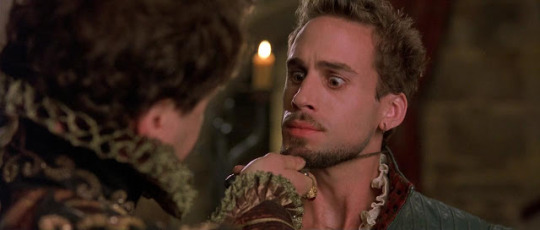
Colin Firth and Joseph Fiennes in Shakespeare in Love (John Madden, 1998)
Cast: Joseph Fiennes, Gwyneth Paltrow, Geoffrey Rush, Tom Wilkinson. Colin Firth, Simon Callow, Judi Dench, Imelda Staunton, Ben Affleck, Martin Clunes, Rupert Everett, Jim Carter, Joe Roberts. Screenplay: Marc Norman, Tom Stoppard. Cinematography: Richard Greatrex. Production design: Martin Childs. Film editing: David Gamble. Costume design: Sandy Powell. Music: Stephen Warbeck.
Posterity is a bitch. Winning a best picture Oscar doesn't necessarily fix a film permanently in the hearts and minds of moviegoers or film historians. Almost overnight, the tide began to turn against John Madden's Shakespeare in Love, in large part because it was a surprise winner over the presumed front-runner, Steven Spielberg's Saving Private Ryan. As time has passed, Gwyneth Paltrow's best actress win for Shakespeare in Love has been questioned, too, partly because Paltrow's subsequent acting career has done nothing to maintain her reputation, and her dabbling in fields such as country music, fashion, and off-beat New Age medicine and diet has made her look like a giddy dilettante. Even the fall of Harvey Weinstein cast a dark shadow over Shakespeare in Love, which he helped produce for his company, Miramax, and for which he managed an extensive Oscar campaign. But when I watch the film again, I find myself caught up in its witty imagining of Shakespeare's life and milieu, the sexiness of its romantic intrigue, and yes, Paltrow's skillful performance of what is essentially four roles: Viola De Lesseps, Thomas Kent, and both Romeo and Juliet. It's a charming tour de force that makes me wonder what brought it out of her and what subsequently made her crash and burn. Much of the success of the film, however, lies not in its uniformly good performances or in John Madden's direction, but in the Oscar-winning screenplay by Marc Norman and Tom Stoppard. I suspect the latter, who had already demonstrated his intimate knowledge of Shakespeare in the play Rosencrantz and Guildenstern Are Dead, is most responsible for a screenplay that can attract the casual moviegoer and entertain English majors at the same time. Some of its jokes go over a lot of the audience's heads, such as the revelation that the bloodthirsty, sadistic street urchin (Joe Roberts) who hangs around the playhouse is named John Webster. The character is just the right age to grow up to write those hair-raising Jacobean plays The Duchess of Malfi (1612) and The White Devil (1614), but not knowing that doesn't matter much to the success of the film. Shakespeare in Love is never, as its central character would put it, "caviar to the general." Is it a better film than Saving Private Ryan? Or is it just the temporary beneficiary of aggressive promotion? That bitch posterity will be the final judge.
3 notes
·
View notes
Text
NOTES (1997)
The Lost World: Jurassic Park is the sequel to Steven Spielberg's 1993 film recounting events on a Costa Rican island inhabited by genetically-engineered dinosaurs, which broke all box-office records and showcased an emerging visual effects technology.
Based on the novel by Michael Crichton, the story picks up four years after the disaster at Jurassic Park. Something has survived on a second island Isla Sorna, where the dinosaur manufacturing facility code-named Site B has been destroyed by a hurricane and the animals now run free, constrained only by the laws of nature.
"When I first heard that Michael was going to write the book and that he was thinking of calling it The Lost World, I was thrilled because I'm a big fan of Sir Arthur Conan Doyle's book The Lost World. I was compelled by the idea of being inside a prehistoric world that exists today - not behind electrified fences, not in a theme park, but in a world without the intervention of man. I thought, 'Wow, what a great story.' If I hadn't found a story I was interested in, Jurassic Park would have remained just a nice memory for me," says Steven Spielberg.
For Spielberg, who had been carefully considering a number of projects for his return to directing after a three-year hiatus, Crichton's interest in revisiting the Jurassic saga helped sway his own decision. Universal Pictures and Amblin Entertainment, Spielberg's production company, had begun discussing a sequel to Jurassic Park as the original film was breaking box-office records around the world en route to becoming the highest-grossing motion picture of all time. Now, Spielberg, Crichton and Jurassic Park screenwriter David Koepp entered into a gentleman's agreement to bring The Lost World to the screen, under the Universal-Amblin umbrella.
"I realized that what I really wanted to do was direct. I had started a company and done a lot of other things in those three years. So I was ready to return to it, and I had always wanted to do a sequel to Jurassic Park - both because of popular demand and because I'd had such a great time making the first film," Spielberg reflects.
With the deal in place, Spielberg began to pull together a creative team, nearly every member of which was a veteran of Jurassic Park. Serving with Spielberg were producers Gerald R. Molen and Colin Wilson. Executive producer Kathleen Kennedy would also return to the fold, along with production designer Rick Carter, film editor Michael Kahn and composer John Williams. With full motion dinosaurs by Dennis Muren, live action dinosaurs by Stan Winston and special dinosaur effects by Michael Lantieri, this Academy Award®-winning triad that had combined talents to create the dinosaur effects for the first film also committed to the sequel. Of all the department heads, only director of photography Janusz Kaminski - who had shot Schindler's List for Spielberg - was not an alumnus of Jurassic Park.
In The Lost World: Jurassic Park, Jeff Goldblum reprises his role as chaos theorist Ian Malcolm and Richard Attenborough makes a special appearance as the ambitious entrepreneur John Hammond. Julianne Moore (Nine Months ), Pete Postlethwaite (In the Name of the Father ), Arliss Howard (To Wong Foo, Thanks for Everything! Julie Newmar ), Vince Vaughn (Swingers ), Vanessa Lee Chester (Harriet the Spy ), Peter Stormare (Fargo ), Harvey Jason (Air America ), Richard Schiff (City Hall ) and Thomas F. Duffy (Wolf ) join Goldblum in the cast.
The Lost World: Jurassic Park is Spielberg's first film since 1993, when he directed both Jurassic Park and Schindler's List, which won a total of seven Academy Awards® including Best Picture and Best Director. Jurassic Park was also honored with three Academy Awards® including Best Sound, Best Sound Effects Editing and Best Visual Effects.
It was clear that Universal wanted to talk about doing a sequel in the record-setting period following the release of the original film. (With worldwide ticket sales of more than $916 million, Jurassic Park continued to break records when it was released on home video, where it holds the title of top-selling live-action motion picture of all-time.) The filmmakers had discussions amongst themselves and with Michael Crichton.
While there was interest in a sequel, there was no guarantee that Crichton was going to write another book. Determining a schedule for a second Jurassic Park film was dependent on whether Crichton would proceed.
Meanwhile, Spielberg and screenwriter David Koepp were already talking. Yes, the director confirmed, there would be interest in an encore, if there was a good story to be told.
In those heady months after the release of Jurassic Park, when the question of whether dinosaurs could be made real was answered with a resounding affirmative, there was a new question. "Sure you can do dinosaurs, but what can you do with them?," Koepp remembers thinking.
So began the dialogue between the filmmaker and the screenwriter, who were getting together from time to time to just bounce ideas off one another, recalls Koepp.
Word that Crichton was working on the manuscript for his follow-up novel only served to sharpen Koepp and Spielberg's wild imaginations. "We'd throw ideas at one another and see what kind of reaction it provoked," recounts Koepp. "Suddenly I'd say something and that made him think of something that made me think of something. It just feeds in that way."
Spielberg would go off from these brainstorming sessions and storyboard the ideas. "Steven's got such a wonderful, fertile mind, especially for these sorts of adventure sequences and action sequences," says Koepp. His challenge as a writer was to figure out how to incorporate what he describes as "these fantastic sequences" into the loose structure of a movie that he had in mind and then integrate them with Crichton's work.
"In an interesting way, this is a lot like the way animation works where you start with a visual idea and then, in a very logical way, craft the story," observes executive producer Kathleen Kennedy. "Our story was very dependent on the visual imagery."
"When you have Michael Crichton and the book, you are already in very good shape," says Kennedy. "Add to that the combined imagination of Spielberg and Koepp and you have the basis for a very exciting film."
One of the challenges in approaching The Lost World was the audience's own enormous expectations. As Koepp observes, "audiences tend to feel pretty proprietary about it. Everybody has their own ideas about what should happen in a sequel."
Fortunately, Spielberg has never forgotten his own experiences at the movies going back to his boyhood days when his father took him to see Cecil B. DeMille's The Greatest Show on Earth. He was amazed by the power of the cinematic experience and soon started to make movies with friends and members of his family. "The audience comes first," says Spielberg. "I really think of the audience when I think of a Jurassic Park or a Lost World or the entire Indiana Jones series. A lot of this movie was made for what I hope is the pure pleasure of an audience."
The result is a movie that is both similar and different - an intense, visually stunning adventure that pushes the limits of imagination and technology.
Audiences will embark on this new adventure with a familiar face as their guide. "I cast Jeff Goldblum again because he is Ian Malcolm," says Spielberg. "There is no Ian Malcolm except as played by Jeff." This time, Dr. Malcolm is the anchor for the story. "In the first film, Malcolm was along for the ride and he was kind of a critic," Spielberg continues. "In this sense, he's leading the journey in The Lost World. He has a very strong motivation for returning."
Jurassic Park ushered in a new era of visual effects, brilliant computer-generated images (CGI) blended seamlessly with the state-of-the-art mechanical and animatronic special effects. The combination gave life to creatures believed to be extinct for 65 million years. "I think that people were a little bit amazed that the dinosaurs looked as real as they did," says Spielberg.
But whereas moviegoers in the summer of 1993 were awestruck by the on-screen digital recreations, audiences today will come to the theaters expecting to see nothing less than living, breathing dinosaurs.
"With the first movie, we had no idea how we would make the dinosaurs real," admits Kennedy. "With the sequel, we had a very clear idea of the visual effects and were very comfortable with the technology for computer graphics. So for The Lost World, we were able to focus on the storytelling."
"It was the story that justified doing a sequel, not the technology," Spielberg comments. "CGI has improved since the first movie and the artistry of the people involved has also improved. So there was a good chance that the dinosaurs would look even more believable than they had in the last adventure. But it was really the story that compelled me to make this movie."
The notion of a lost world, a window on earth's distant past, inspires the imagination. The occasional real-life discovery of a prehistoric link - such as the ancient coelacanth: the 400 million-year-old fish found still to be alive or prehistoric insects found perfectly preserved in amber - fuels these dreams. Sir Arthur Conan Doyle visited the subject in his turn of the century Professor Challenger series. Somewhere beyond Doyle's vision of an evolutionary anomaly and John Hammond's technologically marvelous Jurassic theme park is The Lost World.
On another island off the coast of Costa Rica, in a chain called Los Cinco Muertas (The Five Deaths), dinosaurs are living and breeding in the wild. This is Site B. "A genetic laboratory, the factory floor, so to speak," explains Spielberg, where once upon a time experiments and cloning attempts not suited for public exhibition were conducted by InGen scientists.
The behind-the-scenes laboratory was knocked out of commission, but nature found a way. For four years now, dinosaurs have flourished in a perfect ecological system unfettered by man.
As The Lost World begins, the balance of nature is about to be tested once again. Peter Ludlow (Arliss Howard), John Hammond's mercenary nephew, has taken over the nearly bankrupt InGen. In a presentation to the board of directors, he unveils a plan to restore the corporation's financial health by harvesting the "significant productive assets that we have attempted to hide." For him, Site B is a giant cash cow just waiting to be milked.
Hammond (Richard Attenborough) is well aware of the commercial potential in Site B. But he sees another opportunity: a chance to redeem himself by preserving a record of the dinosaurs living in their natural state.
"Finally, what he will have done will not be a terribly tragic thing, but a contribution," says actor Jeff Goldblum.
"He's a dreamer," says Lord Attenborough of his character. "He's not unlike Mr. Spielberg, to a certain extent, in that he is fascinated by the infinite capabilities of human endeavor. Hammond just goes that much farther." The Jurassic Park founder is somewhat chastened and tempered by what has happened before. "But the old temptations and the old adrenaline comes up and he takes risks again."
Hammond organizes an expedition to reach the island before Ludlow lands his own, less noble mission led by Roland Tembo (Pete Postlethwaite), a leathery adventurer and hunter. To accomplish this he commissions Nick Van Owen (Vince Vaughn), a daring video-documentarian, to chronicle the trip; Eddie Carr (Richard Schiff), a field equipment systems specialist, to outfit the team and keep the operation running in the field; and Dr. Sarah Harding (Julianne Moore), a pioneering paleontologist specializing in the nurturing behavior among carnivores - especially carnivorous dinosaurs.
"Sarah is opening up a new field of study, and she uses this as an opportunity to explore her beliefs," Spielberg observes. "She has an insatiable curiosity." Which is exactly why Sarah mentioned none of this to her boyfriend, Ian Malcolm, who would have tried to stop her had he known. When Hammond asks Malcolm to lead the venture, he refuses - until Hammond informs him that Dr. Harding is already there.
The revelation that his girlfriend is alone on an island with dinosaurs drives Malcolm into action. "It's a very monumental moment for me," Goldblum explains. "I go down there with a head full of steam and a gut full of passion."
Of the people who reach the Lost World, only Malcolm comprehends the danger. He knows from experience that people shouldn't be where dinosaurs are. "It's going to be bad for people," Goldblum says dryly. Among these people is Kelly Curtis (Vanessa Lee Chester), a young stowaway, whose presence on the island raises the stakes even higher for Dr. Malcolm.
In Jurassic Park, Malcolm was more of the moral, conscience-driven intellectual drawn to the exotic park out of curiosity. "This time," says Goldblum, "I've got a very emotional, passionate and driving reason to bring me back. I am a force of nature."
"Drama is often like rubbing two sticks together and watching what it sets aflame," notes Spielberg of the confrontation between the two philosophically-opposed expeditions - one sent to protect the sanctity of the habitat and the other to roundup the animals for commercial exploitation - who "end up having to band together just to survive. That creates more than just a lot of running from dinosaurs - there's a great deal of emotional drama, as well."
Screenwriter Koepp remembers a conversation in which Spielberg told him, "I think this movie is about hunters versus gatherers." Koepp adds "that when the two groups are thrust together into survival situations is when it gets really fun."
Jurassic Park raised the question of man's role in trying to control nature. "You decide you'll control nature and from that moment on you're in deep trouble because you can't do it," says Michael Crichton. "You can make a boat, but you can't make the ocean. You can make an airplane, but you can't make the air. Your powers are much less than your dreams would have you believe."
The debate continues in The Lost World; this time the argument is framed by setting the story in the dense forest wilderness, where man's impact on life and the environment is clearly evident. As the Native American Chief Seattle observed a century ago, "Man did not weave the web of life, he is merely a strand in it. Whatever he does to the web, he does to himself."
"The Lost World is exactly what it implies," says Spielberg. "A lot of people who think they can control nature are very presumptuous about their role in the scheme of things and wind up on the short end of the food chain. You have to band together to live and go on."
"It's important in these movies that animals never be characterized as villains, because they are not," Koepp points out. "They're just doing what they do. It's when the humans come into conflict with one another that they may find themselves at the mercy of the animals."
"On one level, this story evolved into one about parenthood and the instinct to protect your young," he continues, echoing a theme that applies to the films human and animal characters. On a more superficial level, the story evolved into one of survival.
Then there is the moral question explored in Jurassic Park. "DNA cloning may be viable, but is it acceptable?" asks Spielberg. "Is it right for man to do this or did dinosaurs have their shot?"
The controversy over cloning - it's possibility implied in Jurassic Park and proved in real life in February 1997 when researchers in Great Britain announced their success in cloning a sheep - raged anew on the front page of newspapers just as The Lost World was in post-production.
Spielberg always respected the science behind Jurassic Park as real, much as he respected real-life research as the basis for his other projects, such as Close Encounters of the Third Kind .
Contained in those news stories was another point that confirmed what Crichton, Koepp and Spielberg suggested in their latest adventure. The failure rate in cloning an animal is presently staggering: on the order of 300 to 1. For every success, there were numerous failures, from death to deformity, if the cloning procedure took at all. As Hammond tells Dr. Malcolm, he needed a factory, Site B, to overcome this ratio and stock Jurassic Park with the perfect specimens visitors saw there.
"A movie like this needs at least a year to 18 months of prep time," says Spielberg. "You can't just throw this together in a normal four-month prep for a drama or a comedy. It takes 18 months to build the animals. We began sketching and designing some of the sequences about two years ago."
In the spring of 1995, production on The Lost World: Jurassic Park started to come together. Producers Gerald R. Molen and Colin Wilson, both longtime Spielberg collaborators who were veterans of the first movie, began to focus their substantial producing skills on the project. Molen roughed out a schedule and budget as Michael Crichton was concluding his novel and Spielberg and screenwriter David Koepp were developing ideas for the screenplay. Colin Wilson, who oversaw the visual effects work and was largely responsible for the post-production on Jurassic Park while Spielberg was in Poland making Schindler's List, reassembled the visual effects team from the first film and began to address the dimensions of the new project. Dennis Muren at ILM, Stan Winston and Michael Lantieri were all eager to apply newly-developed technologies to better what they accomplished with stunning effect on the first film.
Production designer Rick Carter, who also designed the look for Jurassic Park and has been associated with Spielberg and his production company since the Amazing Stories television series, began his work on The Lost World when he and storyboard artist Dave Lowery met over dinner with Spielberg that spring. "We just started storyboarding one of the scenes from the book and it evolved from there. By the fall, we had a full crew of set designers, art directors and illustrators," Carter recalls.
"It's my job to find a lost world and then create The Lost World," Carter continues. "In this particular film, we are coming back to the same type of place where we were in the first film but it's a lot rougher." That this more natural, wild environment is less hospitable to the dinosaur population than the safe containment of the man-made park of the first movie can be seen in the battle-scarred head of the male T-Rex.
Carter and his team constructed various environments based upon what they knew as the outline of the movie. "We would show Steven our ideas for sets and when he approved them, that would often spark ideas - right on the spot we'd come up with more and more scenes, and those would be storyboarded and become part of the actual story."
The preliminary visualization phase continued as Carter, his art directors, draftsmen and illustrators refined the ideas into models. Carter also turned to the computer for help in determining the look of many of the visual effects sequences. He made rough 3-D animations, called animatics, which show characters moving within an approximation of the set.
"In this kind of movie, so much is being constructed visually," notes Carter, contrasting the open, organic process of creating The Lost World with other projects where the look is strictly determined by "a narrative we absolutely adhere to at all times."
The storyboards, animatics, illustrations and models created by Carter's art department provided the foundation for the entire production. The storyboards gave every member of the growing production team a clear idea of Spielberg's vision - information they would use to prepare their portions of the picture. They were constant throughout production with filmmakers using them as a guide from the earliest days of prep right through post-production. On the set, for instance, storyboards for each day's work were posted on a large display board. As pieces of the sequence were shot, the corresponding storyboard was marked as complete.
Storyboards for the big set piece action sequences were released to the visual effects teams early to give them as much time as possible to complete the intricate task of flawlessly interlacing digital, physical and robotic effects. There was no question that the visual effects for The Lost World would be every bit as challenging as they were on the first film. Perhaps even more so because audiences that had modest expectations for the first film's dinosaurs would now expect greatness.
Stan Winston was already well on his way to creating an entire new set of dinosaurs at his studio in Los Angeles' San Fernando Valley. New technology and such seemingly simple things as improved hydraulic systems were developed in the years between Jurassic Park and The Lost World. As dazzled as audiences were with Winston's brilliant work on the first film, he knew that he could do even better and was determined to prove the point.
"People are very aware of the advancements in the computer world since Jurassic Park," Winston comments, "but they tend to forget that the animatronic world has also made some incredible advances, producing characters in which the technology is virtually undetectable. In large part, that is due to the tremendous advances we made in Jurassic Park and in the time since then."
"There were tremendous developments in hydraulic technology - developments that allowed us to manufacture twice the number of creatures in half the amount of time and for slightly less money," Colin Wilson elaborates. "That was quite amazing. We got a lot of improvements in performance and technology. We got double the number of characters, and we paid less for it. But the most important part of the equation was how much better the character performances would be for this movie."
The sequel gave Winston the opportunity to make dinosaurs that were even more lifelike. But it wasn't just a matter of refitting the creatures from the first film with new movements and armatures. To begin with, there are more dinosaurs in The Lost World. So while the retooled T-rex from the first film joins Goldblum and Attenborough as a returning cast member, Winston and his crew built a second adult T-rex from scratch and fabricated nearly 40 creatures in all. The Stan Winston Studio, located in an industrial section of Van Nuys, utilized the talents of more than 100 artists and technicians during the year and a half that it took to design, draw, sculpt, mold, frame, mount and paint the different dinosaurs. There was diversity, too: from the tiny chicken-sized Compsognathus ("compy") to the two-story-tall T-rexes.
The work also involved careful coordination with the other two captains of the visual effects squad. Lantieri, who heads up the mechanical effects team, worked closely with the Winston shop to fabricate the giant T-rex frames and movements, as well as several other design issues. The Winston Studio's maquettes, scale models of the finished dinosaurs, were shared with Muren and his team at ILM, where they matched the colors, textures and movements of the digital creatures so that they would mesh seamlessly with Winston's live-action dinosaurs.
Part of what makes Winston and his creatures so magnificent is his approach. He doesn't think of them in a mechanical sense, and he couldn't tell you exactly how to build them. He doesn't look at his creations as inanimate robots. Instead, he thinks of them as characters, performers and stars. "We give them personalities. They have expressions," he says.
In fact, it is Winston's own background - first as an actor, then as a make-up artist and more recently as a director - that helps him keep his crew focused with this idea. On the set, as he stands next to Spielberg, he speaks to his puppeteers through headsets, intoning cues and direction for their "performance."
The animal characters created by Winston proved to be a benefit for the human actors, as well. It gave them a real representation - an actor, so to speak - to play against.
To add to the authenticity of the dinosaur fabrications, Spielberg once again enlisted noted paleontologist Jack Horner of the Museum of the Rockies, who had served as an advisor on Jurassic Park. This noted scholar, who is one of the world's foremost fossil hunters, worked very closely with Spielberg and Winston in creating lifelike representations of these long extinct creatures. Although much of our dinosaur knowledge is based on speculation, Horner revealed that there is much that can be deduced by putting knowledge of today's skeletal science together with the fossilized bones. Like a detective, Horner and other researchers like him are able to develop detailed ideas of what dinosaurs looked like and how they behaved - knowledge that Spielberg and Winston readily applied to their work in The Lost World .
Horner's work with Winston was especially important because the look and movement of the Winston dinosaurs would become the basis, most notably in terms of appearance and texture, for the digitally created dinosaurs that Muren would produce.
In San Rafael, California, Muren was gathering his legion of digital artists at Industrial Light & Magic. Since Raiders of the Lost Ark, Spielberg has relied upon the collective talent at ILM, and one way or another Muren has been a part of it all.
Digital technology is moving with such velocity that techniques painstakingly developed at the beginning of Jurassic Park were surpassed by improvements before production was over. There was tremendous desire on the part of many who worked on the original film to finesse the visual effects to an even higher level. "This show is a lot different from Jurassic Park in that we were sort of timid on the first one because we didn't know if we could do it," says Muren. "Now we figured out we could do it and have had three years to think about it."
Like Winston, Muren wanted to improve on what he did with the first movie. This time he wanted to give Spielberg something else: freedom. "At the beginning of the show I mentioned to Spielberg that we can do just about anything," Muren relates.
The idea and overarching philosophy driving Muren and ILM is that filmmakers shouldn't have to think about the technology so that they can be free with the images. So, for over 20 years, we've been building up tools to give these directors what they want without restraint.
Examples of this independence include the ability to shoot visual effects shots with complete freedom of movement for the camera and a greater degree of interactivity between the CG creatures and live action actors. Visual effects shots used to mean locked-off cameras and rigid procedures. But technology has advanced to the point where the visual effects camera can be mounted on a steadicam and moved about with total fluidity.
No matter how wonderful and real the work of Winston and Muren appears to be, it wouldn't play as well without the third element of the visual effects team - Lantieri's physical effects. Lantieri, one of Hollywood's most skilled effects men and another longtime member of the Spielberg team, remarked that he had more work to do in the final weeks of the 14-week shoot on The Lost World than he did throughout Jurassic Park. "Everything about this show is big," says Lantieri. "On the last show, we crashed an explorer. This time we dangle a 60-foot-long double trailer off a cliff."
The largest set piece that Lantieri had to create involved the massive field systems trailer, which was designed to provide a base of operations for Dr. Malcolm and his travelers. To begin, there was not one but five trailer sections - all modified Fleetwood motor homes. There were literally hundreds of moving parts both inside and out and all of which had to be rigged by the special effects unit. Before the end of the movie, all manner of damage is inflicted upon the trailer and its human occupants, and Lantieri had to figure out how to make it all happen. The sequence, spread across almost a month of the shooting schedule, was filmed on two soundstages and the side of a parking structure dressed to look like a cliff wall.
Simultaneous to the visual effects development, Carter began a real-life search for a Lost World. He traveled extensively, looking in the Caribbean, Central America and as far away as New Zealand for places that visually conveyed the idea of a Lost World - a place forgotten by time and humanity.
He found his Lost World closer to home - in the Redwood Forests near Eureka, California, about six hours north of San Francisco on California's aptly named Lost Coast. With tremendous cooperation between the filmmakers and the California State Parks, the company was allowed to shoot in the midst of some of California's most spectacular scenery in Fern Canyon, Prairie Creek and Patrick's Point State Parks.
In a film defined by its scope and scale, the tall and massive trees, known as the Coast Redwood, were about the only thing that could dwarf this production. The Redwood settings were interesting for another reason: the trees have an ancient history dating back more than 160 million years. According to John B. Dewitt of the Save-the-Redwoods League, "Redwood Forests, as we know them today, have been present in California for about 20 million years. They represent a unique and beautiful relic flora from the days when dinosaurs roamed the earth."
For the film's opening sequence, Spielberg returned to Kauai, Hawaii, where he previously shot portions of Jurassic Park and Raiders of the Lost Ark .
While Eureka and Kauai provided most of the rich and forested Isla Sorna exteriors, much of the film was shot within Southern California and on the Universal Studios stages and backlot where all of the sets were constructed.
With the project now increasingly defined, Gerald R. Molen and Colin Wilson, joined by associate producer Bonnie Curtis, spent several months lining up the crew and a multitude of production elements. "My job is to provide the director with the tools necessary to do what he wants to do," says Molen. "The most important thing is to find the right people."
By April 1996, a year after Spielberg began to seriously plan the picture, most of the locations were picked, sets designed and the crew was largely in place to prepare for a start date of September 5 - still five months away. While the visual effects teams were already well into their work, others were just getting started, and some were not to start until the end of summer.
In June, construction coordinator John Villarino opened up his office on Universal's Stage 12, the second largest sound stage in the world, and started a job that would ultimately fill six of Universal's biggest sound stages wall-to-wall with sets.
Villarino worked mainly from models, illustrations and prints provided by the art department. By the end of the show, Villarino figured that his crew of 120 actually constructed 80 of the total 100 different sets. "There wasn't enough stage space in Hollywood to do this movie. It would have taken another four stages," he says, but they just didn't exist.
Carter addressed the stage space issue by devising a way to change over the stages from one set to another throughout the show. For instance, on Stage 12 Villarino changed over the set three times. The company would shoot on the stage, leave to shoot on another stage for several days and then return to a completely different set configuration. "It was kind of hectic," Villarino allows.
The massive T-rexes also presented a challenge to the production. Stars in their own right, they required special handling.
The T-rexes, which each weighed 19,000 pounds and ran on tracks, could not be moved from their home on Stage 24. Instead, sets were built around the T-rexes. This occurred regularly throughout production.
One of the largest sets constructed for The Lost World was the workers village on Site B which was left intact after filming to become a part of Universal Studios Hollywood theme park tour. The operational center, where at one time InGen scientists performed feats of genetic engineering that ultimately led to the cloning of dinosaurs for Hammond's Jurassic Park, was built from the ground up to look as if it had been destroyed by a hurricane and abandoned by the company.
So much of The Lost World takes place on this isolated island, and it is a very green world. One of the busiest greens crews ever to work a film feverishly dressed and maintained each stage. Greens coordinator Danny Ondrejko led a team of 14 greensmen, five of whom would normally be completely in charge of a full production. Instead, Ondrejko put each in charge of a stage or a group of sets.
When you're shooting in a forest, like the Redwood Forest, you don't think about having to dress in with greens. "It's like bringing coal to Newcastle," laughs Carter.
But the truth is that lots of greens carefully screened by the supervising park rangers to avoid contaminating the ecological balance were brought into the forest and removed. The reason: only certain kinds of plants were available in Southern California, and since most of the film was shooting in Hollywood, those were the most practical plants to choose. So the greens department brought supplies of Southern California greenery to Northern California so that close-up shots would match.
Principal photography for The Lost World: Jurassic Park began on September 5, 1996 in the spectacular Fern Canyon, about 40 minutes north of Eureka.
The company spent two weeks in Northern California, filming in a combination of state parks and private land. Within a week, Spielberg was already ahead of schedule.
By the time the Eureka shoot was over, key live action scenes had been captured, dinosaurs were on film, and all of the plates for Industrial Light and Magic's (ILM) three major computer-generated (CG) sequences and nearly half the CG plates for the entire show had been filmed. Within days, those plates would be cut into scenes and delivered to ILM to start their computer animation of the CG dinosaurs.
Throughout the fall, the filmmakers shot on stages at Universal and a select group of surrounding locations.
Janusz Kaminski, the director of photography who won an Academy Award® for his work on Schindler's List, noted Spielberg's approach to The Lost World. "The camera became really active and ended up being in more unusual places than in his latest movies."
Kaminksi and his grip and electric crew employed virtually every camera and lighting device known to the industry and more than a few custom tailored for this film. For example, there were two movable camera mounts, one that functioned something like an elevator and another that allowed the camera to dolly - suspended upside-down from the ceiling of Stage 27.
"It's very much a Spielberg movie where the camera sweeps the scenario," Kaminski continues. "It moves from high angles into extreme close-ups, follows the actors and reflects the drama of the movie and the story."
For the actors, The Lost World was the most physically demanding film any of them had ever worked on. Whether they were suspended on wires or being tossed about in the mud, there was seemingly no limit to the physical manifestations of dinosaur encounters. They sometimes likened the experience to being on an amusement park ride. According to Vince Vaughn, "The difference is that in an amusement park, you take the ride once and its over."
"Part of the joy and challenge of working with Steven Spielberg," says executive producer Kathleen Kennedy, "is that he constantly pushes himself to do things in an unconventional and exciting way. He challenges all of us to go beyond anything that's been done before."
The biggest challenge for producer Gerald R. Molen was to keep the production on track and on budget. "The budget was a little bit higher for this movie than it was for the first - which was about $58 million - but we were actually able to get more for our money this time," Molen notes. "We got more from Stan Winston and his people because a lot of the research and development had already been dealt with for Jurassic Park. We also got more from ILM, in part because the cost of CG had decreased. Also, Steven had decided to get as much as he could from the mechanical dinosaurs, without resorting to CG more than was necessary. So even though this movie would have a few more CG shots than Jurassic Park, it wouldn't have a great deal more."
"Steven was able to do that, to plan for it and budget for it, because he is such a visionary. He is able to see the entire movie in this mind long before he starts to shoot so he knows exactly what he needs. He isn't the kind of director who ends up with a lot of film literally on the cutting room floor. There is no waste. Because of that, we were able to budget this movie very carefully and responsibly."
On December 11, Spielberg lifted his glass in a champagne toast to the crew, just as he had on the final night of filming Jurassic Park. Congratulating them for bringing the film in ahead of schedule, he said: "Thank you for a great show."
It was an emotional send off to what had been an exhilarating experience for everyone involved in the making of The Lost World: Jurassic Park. Knowing up front that the toughest thing about a sequel is the expectation that goes along with it, this veteran production team never got distracted worrying about how they were going to top the first movie.
"Our response to that expectation was to make a different, more dramatic movie, while keeping the humor and suspense and all of the things that audiences had liked about the first movie," Spielberg concludes. "I think that's what people want in a sequel, anyway. They want to roll up their sleeves and fall right back into that adventure."
4 notes
·
View notes
Text
'...Storyline
At the heart of All of Us Strangers is Adam, a reserved individual with a convoluted history, whose life takes an unexpected turn when he crosses paths with a mysterious neighbor named Harry. This encounter shatters the monotony of Adam’s everyday life, triggering a sequence of events that guides him back to his suburban hometown. To his surprise, his long-departed parents appear to still inhabit the familiar surroundings. The precise intricacies of the plot have been deliberately concealed, heightening the sense of intrigue and building anticipation around the film.
Cast
The ensemble cast of All of Us Strangers boasts a constellation of stars, each contributing their expertise and talent to their designated roles. Andrew Scott delivers a compelling performance as Adam, with Paul Mescal stepping into the role of Harry, Adam’s romantic interest. The cast further features Carter John Grout as Young Adam, Jamie Bell as Dad, Claire Foy as Mum, and Ami Tredrea in the role of a Waitress. With such a stellar lineup, audiences can anticipate exceptional and memorable performances throughout the film.
Director and Crew
Andrew Haigh, celebrated for his adept storytelling, takes on the roles of both writer and director in All of Us Strangers. Haigh’s previous works include acclaimed movies like Lean on Pete, 45 Years, and Weekend. The film is in capable hands with producers Graham Broadbent, Peter Czernin, and Sarah Harvey, notable for their involvement in successful projects such as Three Billboards Outside Ebbing, Missouri, and The Best Exotic Marigold Hotel. With this highly skilled and accomplished creative team, All of Us Strangers is poised to become a cinematic masterpiece.
Music
Emilie Levienaise-Farrouch, renowned for her outstanding work on the 2022 film Living, is the composer behind the music of All of Us Strangers. Her exceptional talent is anticipated to elevate the emotional depth of the movie, adding to its overall atmosphere and immersing the audience more deeply in the narrative. The score is poised to be a key element in enhancing the film’s impact and resonating with viewers.
Inspiration
Loosely inspired by Taichi Yamada’s novel “Strangers,” All of Us Strangers maintains a level of mystery regarding the extent to which it draws from the source material. The undisclosed connections between the film and the book have piqued audience curiosity, adding an extra layer of anticipation to the upcoming release.
All of Us Strangers is poised to be a highly anticipated film, promising a distinctive cinematic experience. With a stellar cast, an intriguing storyline, and the visionary direction of Andrew Haigh, the movie is expected to make a lasting impact on viewers. Save the date for its release and get ready to embark on a journey filled with love, mystery, and the exploration of past memories.
FAQs
Q: Is All of Us Strangers categorized as a romance or a mystery?
A: All of Us Strangers is a film that intertwines elements of both romance and mystery, providing a compelling fusion of genres.
Q: What does Adam’s meeting with Harry signify?
A: Adam’s unexpected encounter with Harry serves as a catalyst, disrupting his ordinary life and triggering a sequence of events that compel him to confront his past and revisit his suburban hometown.
Q: Who is responsible for composing the music in All of Us Strangers?
A: The music for All of Us Strangers is crafted by Emilie Levienaise-Farrouch, renowned for her outstanding work on the 2022 film Living.'
#Emilie Levienaise-Farrouch#Living#Andrew Scott#Jamie Bell#Paul Mescal#Claire Foy#Andrew Haigh#All of Us Strangers#Weekend#Lean on Pete#45 Years#Graham Broadbent#Peter Czernin#Sarah Harvey#Taichi Yamada#Strangers
0 notes
Photo

15 notes
·
View notes
Photo
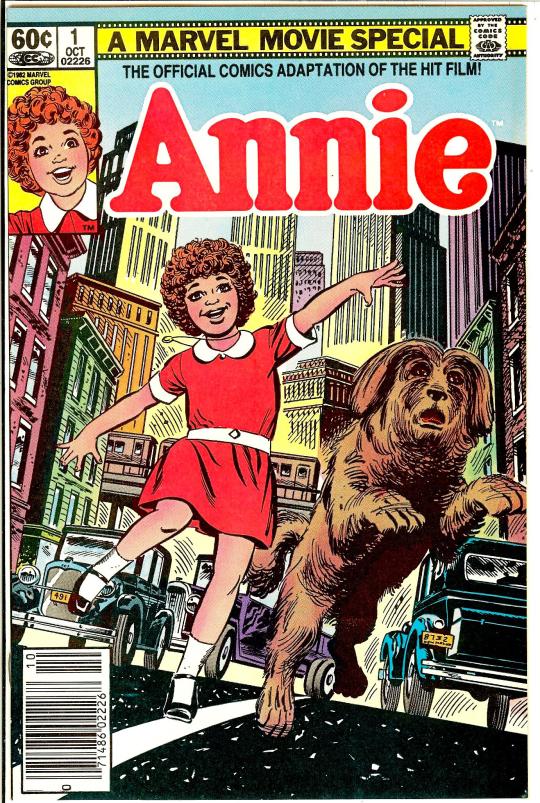
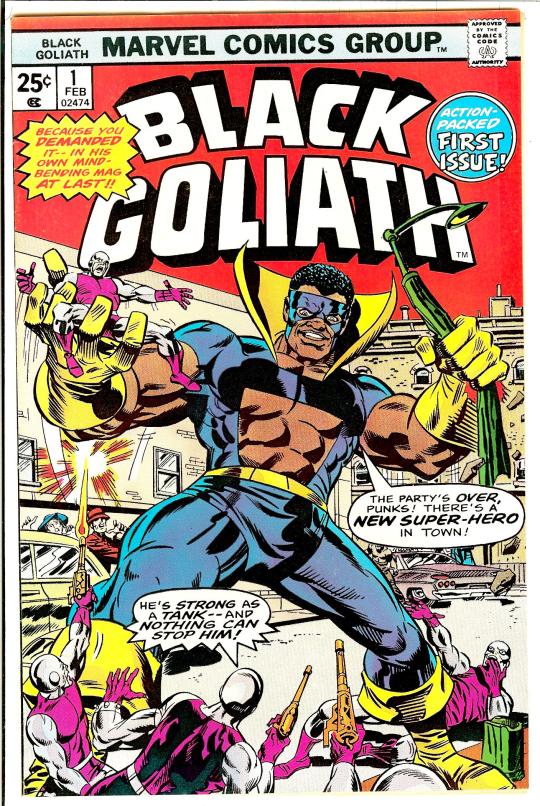
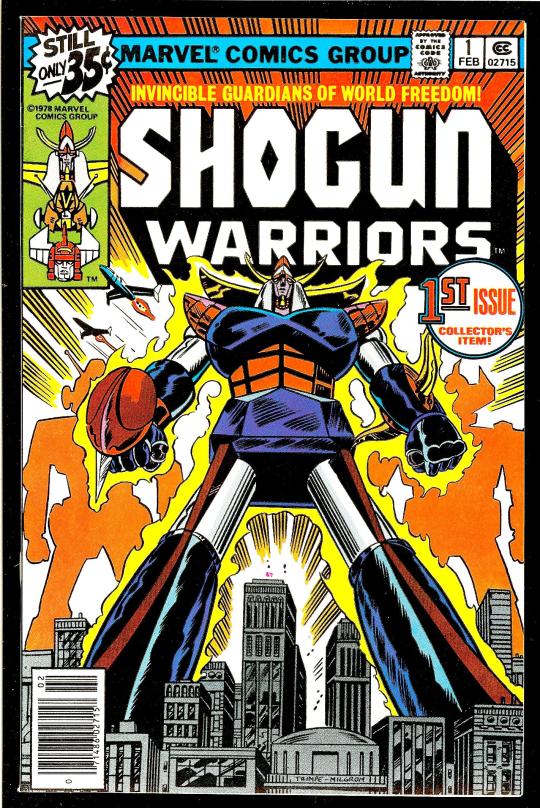
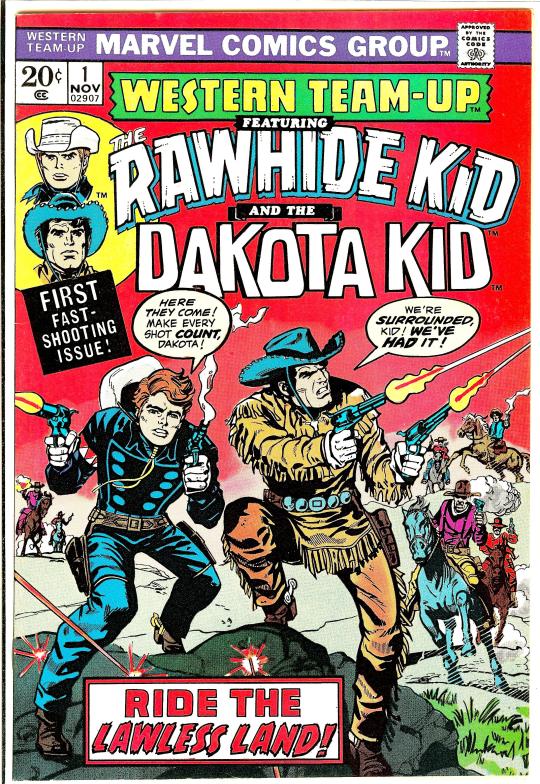



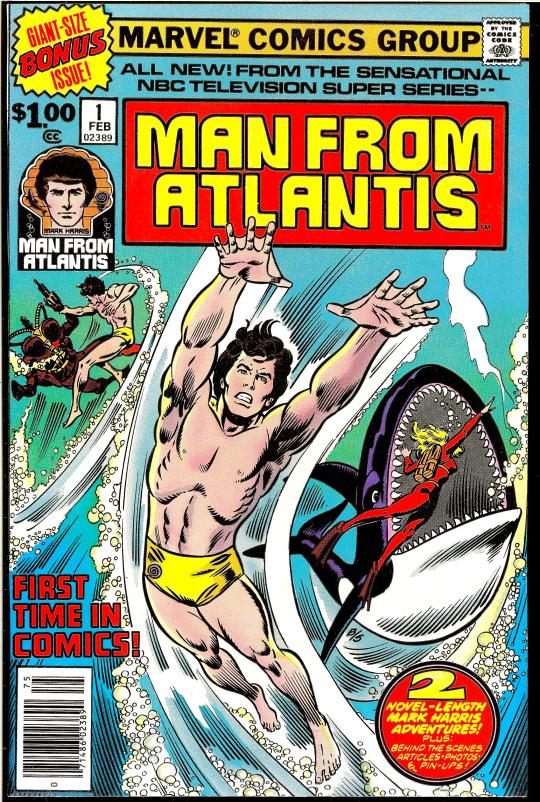
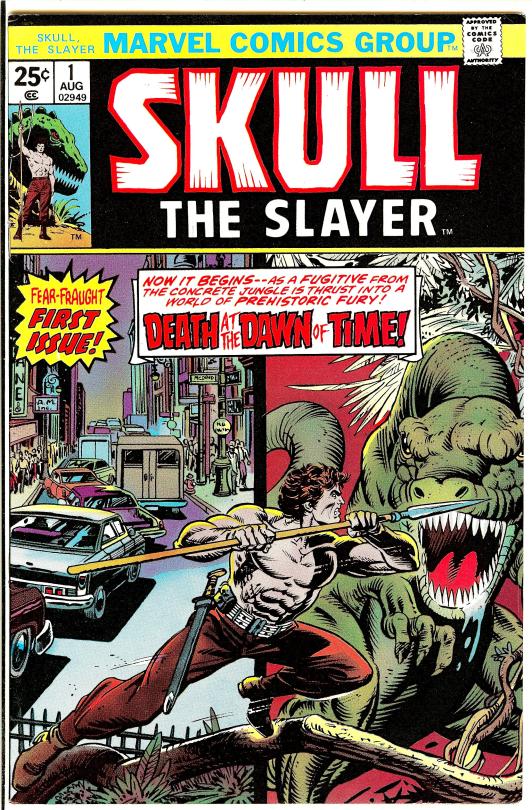
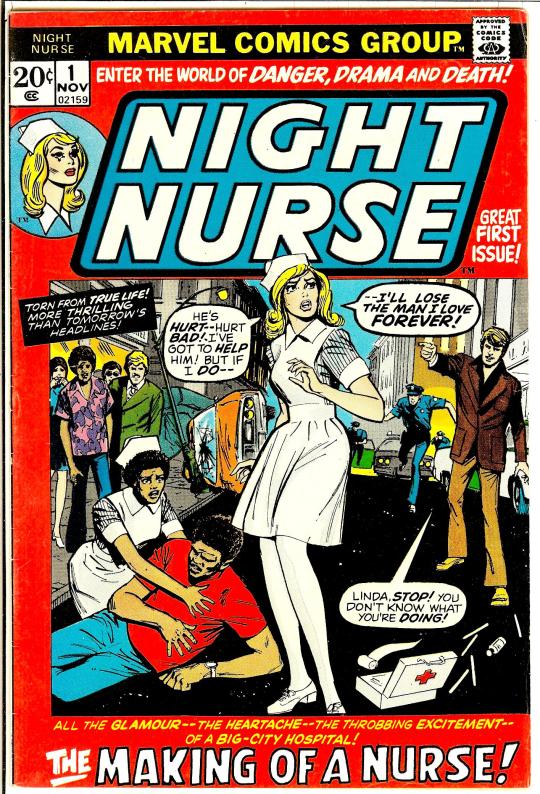
The Marvel(ous) Forgotten First Issues Of Marvel
#Vintage#Art#Illustration#Design#Comics#Marvel#Marvel Comics#Marvel(ous)#Annie#Black Goliath#Shogun Warriors#Western Team-Up#John Carter Warlord Of Mars#Warlord Of Mars#Harvey#Team America#The Man From Atlantis#Man From Atlantis#Skull The Slayer#Night Nurse
64 notes
·
View notes
Photo

Sunken lounge overlooking a reflecting pool, designed by John Harvey Carter, Sacramento, CA, 1968 [1024x683]
7 notes
·
View notes
Text
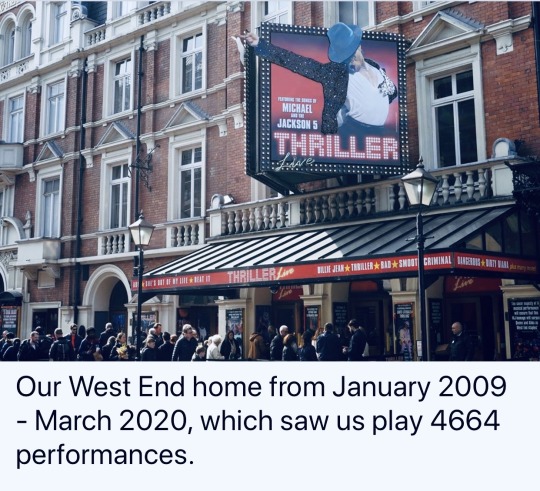






#ThrillerLiveCloses #ApprovedByMJon2009
“Right now our world has been turned upside down, with a pandemic that is changing our way of life. It is affecting us all, financially, emotionally and socially. For me it has resulted in THRILLER LIVE closing prematurely (and permanently) in the West End, as all theatres around the country have been shut, in the public’s best interest. Myself and the rest of the team totally understand and respect that we must all practice social distancing, working together to beat this virus. But yesterday was a very sad day as I joined the cast, crew and other creatives at the Lyric Theatre for one last time. We wanted to come together to say goodbye to each other at the theatre that had become our home for the past 11-years. Ironically we were just two more performances away from becoming the 11th longest ever running show in the West End. Still to be 12th, and the longest ever running show at the Lyric Theatre is an incredible achievement. Another thing the coronavirus has shown us is that we never know what is around the corner and we shouldn’t take what we have for granted. Through hard times, we get to see what matters most and what we really need to value.
One of our cast members said that leaving the Lyric Theatre was like losing a loving partner. And that is partly true, in that sometimes you don’t appreciate what you have until it is gone. But I am sure that each and every one of the Thriller Live cast and crew will go on to great new ventures, just as previous associates have. It’s been an INCREDIBLE journey which has formed great friendships, partnerships and even relationships with babies to boot! For me it seems that things have gone full circle. For it was 30 years ago today (20th March 1990) when I first met the King of Pop, Michael Jackson, and he inspired me to see a world of endless possibilities. He showed me humility, kindness and a laughter like I’d never heard before.
We were at Record One Studios where he was free and at his creative best, producing the ‘Dangerous’ album. Watching a genius at work, who since the age of 5 had been perfecting his craft to become the world’s greatest ever entertainer was a true privilege. And then came an invitation to lunch at Neverland. That was the most memorable weekend ever. I’d never seen a landscape and home so beautiful. A place where Michael could dream peacefully, and one could lose themselves in magical abandonment. Which I did playing on the arcades, riding on the funfair and watching movies in the theatre. Just before I left, as I walked out the oak door, Michael said come back anytime. And I did, at least once a year - return to Neverland, as did many lucky fans, and various charitable organisations that Michael opened his doors for, because he loved to give, help and see others happy. That was the Michael Jackson I knew - a humble, innocent soul, who also happened to be one of the greatest artists of all time. There are many, many other stories that I have shared over the years, and fans and friends will know. Each one of them still as colourful in my mind now as it was when I first lived them. I thank Michael for those memories, and even though he is gone, it has never felt like a goodbye.
From all of us at “Thriller Live”, we want to Thank everyone who came to see the Show in the West End. We are Grateful that we could keep Michael’s Legacy and Music alive through the production and cá look forward to continuing touring the world in years to come. Now here follows a long, long list of thanks to just a few of the many people who made the show possible in the West End. There has been literally hundreds of people involved on and off the stage, so apologies that I can’t list everyone, but each of you are just as important in making this show a special part of West End history ! Producers Paul Walden & Derek Nicol, Mark Strange – General Manager, Ginette Sinnott – Head of Marketing, and everyone else at Flying Music (past and present) – thank you for believing in the show and all you have done to make it a worldwide success.
•Gary Lloyd our amazing Director & Choreographer. I could write a book about his character and talent, so please go read his own ! John Maher our meticulous Musical Director extraordinaire. • Every single band member past and present including Damien Cooper, Oliver Latka, Ryan Alex Farmery, Adam Kovacs and Mike Bradley - the greatest compliment you can pay these guys, is that some audience members still ask if the show is ‘live’. Yes! Applause when screen goes back and our musicians are revealed ! • Yasmin Yazdi, Jo Dyce, Rose Wild and Aisling Duffy – our fierce Resident Directors and Assistant Choreographers whom over the years have put hundreds of cast members through their paces. • Sharon Speirs and Caroline Stroud, our two long running and outstanding Company Managers over the past 11-years. And thank you to others who stepped in. • Nigel Catmur – Lighting Designer, Chris Whybrow – Sound Designer, Jonathan Park – Set Designer, Rob Jones and Catherine Teatum – Costume Designers – thank you for making this show look and sound so great ! • Our hard-working crew – Dawn Harvey, Paul Bond, Glenn Jenkins, Sophie Kemp, Kelvin White, Bill Dimeo, Matthew Giles, Alice Johson, Sara Markwick, Gemma Tucker, Melissa Cooke, Karli Can Heerden, Inca Jaackson, Rosie Woods and Jo Conlon – thank you for being there every day and making the show possible. • Not forgetting dozens of former crew members from Becky Potts and Jessica Plews to Craig and Kate Garratt and many, many more. • A big shout out to Haydon Eshun and John Moabi, our longest running West End cast members. These two guys are stage legends, whose performances did Michael proud every single night. • Respect to Kevin Wilson PR for keeping our name up in lights and doing it always with the utmost enthusiasm. • Thank you to Debbie O'Brien Casting – the talent we have seen over the years has been incredible including Zoe Birkett, Hayley Evetts, Maria Lawson, Samantha Johnson Carter, Cleopatra Madonna, Britt Quentin, Alex Buchanan, Jerome Singer, Trenyce Cobbins, David Jordan, MiG Ayesa and so many more outstanding vocalists ! • We have also been blessed with hundreds of amazing dancers since 2006 and through to the end of this West End run. They, with the singers and musicians are the life blood of the show, which relies, not on massive production, but pure heart and soul to deliver the energy, authenticity and chemistry that was part of Michael Jackson. • Thank you Nica Burns at Nimax for giving us a home for 11-years, and all the staff at the Lyric Theatre for looking after us, and over 2 million audience members throughout the years. • Massive appreciation to Kerys Nathan, our original Director & Choreographer from 2006-2008. You’ll always be a part of the show. • Thank you to every single cast member from the original West End cast featuring Ben Forster, Roger Wright, Denise Pearson, Ricko Baird, Kieran Alleyne, Layton Williams (OFFICIAL), Sterling Williams, Lewis Davies, Kamilah Beckles, Christabelle Field, Elliot James, Earl Perkins, Emily Rumbles, Dannielle Rothman, Sean Williams, Ashton Russell, Ross Sands and Jordan Darrell, to our last with – Wayne Anthony-Cole, Vivienne Ekwulugo, David Julien, Miles Anthony, Florivaldo Mossi, Lauren Gore, Filippo Coffano, Leslie Garcia Brown, Deavion Brown, David Devyne, Mitchell Eley, Ike Fallon, Eliza Hart, Gabriela Hernandez, Amelia-Annie Layng, Arnold Mabhena, Rishard-Kyro Nelson, Oskarina O'Sullivan , Shola B Riley, Triple Calz, Cannon Hay, Isaiah Mason, Ishaan Raithatha and Messiah Unusudimi. • To everyone on our suspended touring production, and all those before which has seen us visit over 34 different countries, thank you, thank you and thank you again. We will see each other hopefully soon as we continue this journey. Until then stay safe, and don't eat too many pies, there is only one costume budget. •Apologies too many not named above, some whom I greatly admire and some whom I am proud to now call friends, you are all in my thoughts.
Lastly, and most importantly – thank you to MICHAEL JACKSON ! “THRILLER LIVE” is your Music, your Artistry and your Magic ! Thank you for your Inspiration , Love and Humanity . 🙏🏼
Dreams do come true — Adrian Grant .
13 notes
·
View notes
Text
Books
Here is the list of architecture books I am planning to read (in the next few years heheh)
A Pattern Language: Towns, Buildings, Construction / Christopher Alexander, Sara Ishikawa, Murray Silverstein
The Architecture of the City / Aldo Rossi
Athmospheres / Peter Zumthor
Complexity and Contradiction in Architecture / Robert Venturi
Conversations with Students (Architecture at Rice) / Louis Kahn
Experiencing Architecture / Eiler Rasmussen
In Praise of Shadows / Junichiro Tanizaki
Learning from Las Vegas / Denise Scott Brown, Robert Venturi, Steven Izenour
Mutations / Rem Koolhaas, Stefano Boeri, Sanford Kwinter, Nadia Tazi, Hans Ulrich Obrist
Neufert Architects' Data / Ernst Neufert, Peter Neufert
The Poetics of Space / Gaston Bachelard
The Seven Lamps of Architecture / John Ruskin
Superstudio: Life without objects / Peter Lang
The Works: Anatomy of the City / Kate Ascher
Yona Friedman: The Dilution Of Architecture / Yona Friedman
Archigram / Peter Cook
BIG, HOT TO COLD: An Odyssey of Architectural Adaptation / Bjarke Ingels
Cities for People / Jan Gehl
Forensic Architecture: Violence at the Threshold of Detectability / Eyal Weizman
The Future Of Architecture / Frank Lloyd Wright
Isay Weinfeld: The Brazilian Architect / Gestalten
Kicked a Building Lately? / Ada Louise Huxtable
Slow Manifesto / Lebbeus Woods Blog
SMLXL / Rem Koolhaas
Thinking Architecture / Peter Zumthor
Uneasy Balance / Christopher Platt, Brian Carter
Yes is More / Bjarke Ingels
Invisible Cities / Italo Calvino
The Pillars of the Earth / Ken Follet
Project Japan: Metabolism Talks / Rem Koolhaas, Hans Ulrich Obrist
Architecture As Space / Bruno Zevi
Architecture Depends / Jeremy Till
The Architecture of Image: Existential Space in Cinema / Juhani Pallasmaa
Are We Human? Notes On Archeology Of Design / Beatriz Colomina
BLDGBLOG Book / Geoff Manaugh
The Condition of Postmodernity: An Enquiry into the Origins of Cultural Change / David Harvey
Constructing a New Agenda: Architectural Theory 1993-2009 / A. Krista Sykes
Content / Rem Koolhaas
Delirious New York: A retroactive manifesto for Manhattan / Rem Koolhaas
The Destruction of Memory: Architecture at War / Robert Bevan
Future Practice: Conversations from the Edge of Architecture / Rory Hyde
The Good Life: A Guided Visit to the Houses of Modernity / Iñaki Ábalos
The Language of Architecture / Andrea Simitch and Val Warke
The Manual of Section / Paul Lewis, Marc Tsurumaki, and David J. Lewis
Oppositions Reader: Selected Essays 1973-1984 / Michael Hays
Pornotopia: An Essay on Playboy's Architecture and Biopolitics / Beatriz Preciado
The Structure of the Ordinary: Form and Control in the Built Environment / N.J. Habraken
Theoretical Anxiety and Design Strategies in the Work of Eight Contemporary Architects / Rafael Moneo
Why Architecture Matters / Paul Goldberger
Cities for a Small Planet / Richard Rogers
The City of Tomorrow: Sensors, Networks, Hackers, and the Future of Urban Life / Carlo Ratti, Matthew Claudel
Cities Without Ground / Adam Frampton, Jonathan D. Solomon, Clara Wong
Collage City / Colin Rowe and Fred Koetter
Concise Townscape / Golden Cullen
The Death and Life of Great American Cities / Jane Jacobs
The Granite Garden: Urban Nature And Human Design / Anne W. Spirn
The History of the City / Leonardo Benevolo
Ladders / Albert Pope
Life Between Buildings: Using Public Space / Jan Gehl
The New Science of Cities / Michael Batty
Triumph of the City / Edward Glaeser
The Urban Apparatus: Mediapolitics and the City / Reinhold Martin
Walkscapes: walking as an aesthetic practice / Francesco Careri
Liquid Modernity / Zygmunt Bauman
Non Places / Marc Auge
#architecture#archibooks#archiread#archistudy#architecture student#reading#self-help books#books#book#library
5 notes
·
View notes
Text
Atlanta “Child Murders”
The curious and controversial string of deaths that sparked a two-year reign of terror in Atlanta, Georgia, has been labeled “child murders,” even though a suspect ultimately blamed for 23 of 30 “official” homicides was finally convicted only in deaths of two adult ex-convicts. Today, nearly two decades after that suspect’s arrest, the case remains, in many minds, an unsolved mystery.
Investigation of the case began, officially, on July 28, 1979. That afternoon, a woman hunting empty cans and bottles in Atlanta stumbled on a pair of corpses, carelessly concealed in roadside undergrowth. One victim, shot with a .22 caliber weapon, was identified as 14-year-old Edward Smith, reported missing on July 21. The other was 13-year-old Alfred Evans, last seen alive on July 25; the coroner ascribed his death to “probably” asphyxiation. Both dead boys, like all of those to come, were African-American.
On September 4, Milton Harvey, age 14, vanished during a neighborhood bike ride. His body was recovered three weeks later, but the cause of his death remains officially “unknown.” Yusef Bell, a 9 year old, was last seen alive when his mother sent him to the store on October 21. Found dead in an abandoned school November 8, he had been manually strangled by a powerful assailant.
Angel Lenair, age 12, was the first recognized victim of 1980. Reported missing on March 4, she was found six days later, tied to a tree with her hands bound behind her. The first female victim, she had been sexually abused and strangled; someone else’s panties were extracted from her throat.
On March 11, Jeffrey Mathis vanished on an errand to the store. Eleven months would pass before recovery of his skeletal remains, advanced decomposition ruling out a declaration on the cause of death. On May 18, 14-year-old Eric Middlebrooks left home after receiving a telephone call from persons unknown. Found the next day, his death was blamed on head injuries, inflicted with a blunt instrument.
The terror escalated that summer. On June 9, Christopher Richardson, 12, vanished en route to a neighborhood swimming pool. Latonya Wilson was abducted from her home on June 22, the night before her seventh birthday, bringing federal agents into the case. The following day, 10-year-old Aaron Wyche was reported missing by his family. Searchers found his body on June 24, lying beneath a railroad trestle, his neck broken. Originally dubbed an accident, Aaron’s death was subsequently added to the growing list of dead and missing blacks.
Anthony Carter, age 9, disappeared while playing near his home on June 6, 1980; recovered the following day, he was dead from multiple stab wounds. Earl Terrell joined the list on July 30, when he vanished from a public swimming pool. Skeletal remains discovered on January 9th, 1981, would yield no clues about the cause of death.
Next up on the list was 12-year-old Clifford Jones, snatched off the street and strangled on August 20. With the recovery of his body in October, homicide detectives interviewed five witnesses who named his killer as a white man, later jailed in 1981 on charges of rape and sodomy. Those witnesses provide details of the crime consistent with the placement and condition of the victim’s body, but detectives chose to ignore their sworn statements, listing Jones with victims of the “unknown” murderer.
Darren Glass, an 11-year-old, vanished near his home on September 14, 1980. Never found, he joins the list primarily because authorities don’t know what else to do with his case. October’s victim was Charles Stephens, reported missing on the ninth and recovered the next day, his life extinguished by asphyxiation. Capping off the month, authorities discovered skeletal remains of Latonya Wilson on October 28, but they could not determine how she died.
On November 1, nine-year-old Aaron Jackson’s disappearance was reported to police by frantic parents. The boy was found on November 2, another victim of asphyxiation. Patrick Rogers, 15, followed on November 10. His pitiful remains, skull crushed by heavy blows, were not unearthed until February 1981.
Two days later after New Year’s, the elusive slayer picked off Lubie Geter, strangling the 14-year-old and dumping his body where it would not be found until February 5. Terry Pue, 15, went missing on January 22 and was found the next day, strangled with a cord or piece of rope. This time, detectives said that special chemicals enabled them to lift the suspect’s fingerprints from Terry’s corpse. Unfortunately, they were not on file with any law enforcement agency in the United States.
Patrick Baltazar, age 12, disappeared on February 6. His body was found a week later, marked by ligature strangulation, and the skeletal remains of Jeffrey Mathis were discovered nearby. a 13-year-old, Curtis Walker, was strangled on February 19 and found the same day. Joseph Bell, 16, was asphyxiated on March 2. Timothy Hill, On March 11, was recorded as a drowning victim.
On March 30, Atlanta police added their first adult victim on the list of murdered children. He was Larry Rogers, 20, linked with younger victims by the fact he had been asphyxiated. No cause of death was determined for a second adult victim, 21-year-old Eddie Duncan, but he made it on the list anyway, when his body was found on March 31. On April 1, ex-convict Michael Mcintosh, age 24, was added to the roster on grounds that he, too, had been asphyxiated.
By April 1981, it seemed apparent that the “child murders” case was getting out of hand. Community critics denounced the official victims list as incomplete and arbitrary, citing cases like January 1891 murder of Faye Yearby to prove their point. Like “official” victim Angel Lenair, Yearby was bound to a tree by her killer, hands behind her back; she had been stabbed to death, like four acknowledged victims on the list. Despite those similarities, police rejected Yearby’s case on the grounds that (a) she was a female-as were Wilson and Lenair-and (b) that she was “too old” at age 22, although the last acknowledged victim had been 23. Author Dave Dettlinger, examining police malfeasance in the case, suggests that 63 potential “pattern” victims were capriciously omitted from the “official” roster, 25 of them after a suspect’s arrest supposedly ended the killing.
In April 1981, FBI spokesman declared that several of the crimes were “substantially solved,” outraging blacks with suggestions that some of the dead had been slain by their own parents. While that storm was raging, Roy Innis, leader of the Congress of Racial Equality, went public with the story of a female witness who described the murders as the actions of a cult involved with drugs, pornograpthy, and Satanism. Innis led searchers to an apparent ritual site, complete with large inverted crosses, his witness passed two polygraph examinations, but by that time police had focused their attention on another suspect, narrowing their scrutiny to the exclusion of all other possibilities.
On April 21, Jimmy Payne, a 21-year-old ex-convict, was reported missing in Atlanta. Six days later, when his body was discovered, death was publicly attributed to suffocation, and his name was added to the list of murdered “children.” William Barrett, 17, went missing May 11; he was found the next day, another victim of asphyxiation.
Several bodies had, by now been pulled from local rivers, and police were staking out the waterways by night. In the predawn hours of May 22, a rookie officer stationed under a bridge on the Chattahoochee River reported hearing “a splash” in the water nearby. Above him, a car rumbled past, and officers manning the bridge were alerted. Police and FBI agents halted a vehicle driven by Wayne Bertram Williams, a black man, and spent two hours grilling him and searching his car, before they let him go. On May 24, the corpse of Nathaniel Cater, a 27-year-old convicted felon, was fished out of the river downstream. Authorities put two and two together and focused their probe on Wayne Williams.
From the start, he made a most unlikely suspect. The only child of two Atlanta schoolteachers, Williams still lived with his parents at age 23. A college dropout, he cherished ambitions of earning fame and fortune as a music promoter. In younger days, he had constructed a working radio station in the basement of the family home.
On June 21, Williams was arrested and charged with the murder of Nathaniel Cater, despite testimony from four witnesses who reported seeing Carter alive on May 22 and 23, after the infamous “splash.” On July 17, Williams was indicted for killing two adults-Cater and Payne-while newspapers trumpeted the capture of Atlanta’s “child killer.”
At his trail, beginning in December 1981, the prosecution painted Williams as a violent homosexual and bigot, so disgusted with his own race that he hoped to wipe out future generations by killing black children before they could breed. One witness testified that he saw Williams holding hands with Nathaniel Cater on May 21, a few hours before the “splash”. Another, 15 years old, told the court that Williams had paid him two dollars for the privilege of fondling his genitals. Along the way, authorities announced the addition of a final victim, 28-year-old John Porter, to the list of victims.
Defense attorneys tried to balance the scales with testimony from a woman who admitted to having “normal sex” with Williams, but the prosecution won a crucial point when the presiding judge admitted testimony on 10 other deaths from the “child murders” list, designed to prove a pattern in the slayings. One of those admitted was the case of Terry Pue, but neither ide had anything to say about the fingerprints allegedly recovered from his corpse in January 1981.
The most impressive evidence of guilt was offered by a team of scientific experts, dealing with assorted hairs and fibers found on certain victims. testimony indicated that some fibers from a brand of carpet found inside the Williams home (and many other homes, as well) had been identified on several bodies. Further, victims Middlebrooks, Wyche, Cater, Terrell, Jones and Stephens all supposedly bore fibers from the trunk liner of a 1979 Ford automobile owned by the Williams family. The clothes of victim Stephans also allegedly yielded fibers from a second car-a 1970 Chevrolet-owned by Wayne’s parents. Curiously, jurors were not informed of multiple eyewitness testimony naming a different suspect in the Jones case, nor were they advised of a critical gap in the prosecution’s fiber evidence.
Specifically, Wayne Williams had no access to the vehicles in question at the times when three of the six “fiber” victims were killed. Wayne’s father took the Ford in for repairs at 9:00 A.M on July 30, 1980, nearly five hours before Earl Terrell vanished that afternoon. Terrell was long dead before Williams got the car back on August 7, and it was returned to the shop the next morning (August 8), still refusing to start. A new estimate on repair costs were so expensive that Wayne’s father refused to pay, and the family never again had access to the car. Meanwhile, Clifford Jones was kidnapped on August 20 and Charles Stephens on October 9, 1980. The defendant’s family did not purchase the 1970 Chevrolet in question until October 21, 12 days after Stephen’s death.
On February 27, 1982, Wayne Williams was convicted on two counts of murder and sentenced to a double term of life imprisonment, Two days later, the Atlanta “child murders” task force officially disbanded, announcing that 23 of 30 “List” cases were considered solved with his conviction, even though no charges had been filed. The other seven cases, still open, reverted to the normal homicide detail and remain unsolved to this day.
In November 1985, a new team of lawyers uncovered once-classified documents from an investigation of the Ku Klux Klan, conducted during 1980 and ‘81 by the Georgia Bureau of Investigation. A spy inside the Klan told BGI agents that Klansmen were “killing the children” in Atlanta, hoping to provoke a race war. One Klansman in particular, Charles Sanders, allegedly boasted of murdering “List” victim Lubie Geter, following a personal altercation. Geter reportedly struck Sander’s car with a go-cart, prompting Klansman to tell his friend, “I’m gonna kill him. I’m gonna choke the black bastard to death.” (Geter was, in fact, strangled, some three months after the incident.) In early 1981, the same informant told GBI agents that “after twenty black-child killings, they, the Klan, were going to start killing black women.” Perhaps coincidentally, police records note the unsolved murders of numerous black women in Atlanta in 1998-82, with most of the victims strangled. On July 10, 1998, Butts County Superior Court Judge Hal Craig rejected the latest appeal for a new trial in William’s case, based on suppression of critical evidence 15 years earlier. Judge Craig denied yet another new-trial motion on June 15, 2000.

#atlanta child murders#african american children#wayne williams#child deaths#child murders#tw child death#death#murder#serial killer#such a long read#sad post#atlanta murders#so many innocent victims#tcc blog#tcc blogger#tcc community#tcc love#tcc post#tcc account#tcc writer#tcc#my serial killer addiction#new content#ku klux klan#innocent chilren#true crime#real crime#reblog
53 notes
·
View notes
Text
Track amphitheater Works provides a blinding Are generally Cage Aux Dmentes with quite the lot of cardiovascular.
For people that will observe RuPaul Charles' all-over "drag race" competitions on VH, amber Minj requires little introduction. The big name of song amphitheater Works' "La Cage Aux Folles" can be a three-time alum of RuPaul's fact display documentation, which projects pull queens with almost everything from sewing a couture appear by blemish to autograph a telenovela script to choreographing in addition to performing an authentic mini-musical.
Minj excels in all the aloft, plus he or she hasn't basically stunted bottomward seeing that the girl debuted around the high-quality competition series within. The week "La Cage" opened from Skokie's Northshore midst for the assuming Arts, Disney released she'd be savoring Winifred Sanderson aka the Bette Midler position within typically the particularly anticipated "hocus Pocus. " throughout the meantime, Minj's nd nation track album, "double substantial Diva, " continually chart. And is actually worth noting that will at the Trailblazer Prizes, Minj introduced Harvey Fierstein-bookwriter and designed superstar of Broadway's "La Cage"-to holes in addition to her performanceof the rating's giant anthem "What i am just. "
In director Kyle A. Dougan's blatant, glamorous staging for track scene Works, Minj may get the exhibit she deserves. "La Cage" sounds terrific plus looks excellent, from lilting adulation duets to frenzied, excessive-kicking, Folies Bergere-inspired move refrain strains.
The particular plot-as within typically the normal comedy by means of Blue jean Poiret, the France film and the particular reboot-facilities on ZazaAlbin Minj. Zaza is definitely Albin's drag personality, acknowledgment of Saint. Tropez and beginner at the nombrar bistro. Albin is definitely Zaza's Truman capote-meets-Elton-John non-annoyance cocky, a passionate husband to Georges Jason Richards, who owns La Cage. Their particular son is Jean-Michel Christopher Ratliff, typically the influence of the drunken one-nighttime have amid Georges in addition to a refrain woman who isn't inside of their lives.
Comedian problems abound any time Jean-Michel becomes involved to Anne Heather Banks, a youthful girl whose father is an remarkable baby-kisser to the appropriate of Anita Bryant and 2 times as homophobic. Jean-Michel insists on net hosting a heteronormative banquet for his fiance� and her home, demanding that Georges butch it up and Albin carry out of look. Albin refuses to be able to comedy alongside, constructing a night that morphs from disaster in order to celebration. Jerry Herman's music and words of the tune capture each intense using a quick-paced combine of amusement and even pathos.
Track movie director Kyra Leigh and even conductor Linda Madonia actualize a soundscape that captures the entire emotions from the track. Georges' plus Albin's whimsical, charming "tune on typically the beach" acclaim, undoubtedly indicates their everlasting adherence to one more. The berserk, completely satisfied appellation tune-carried out via the showstopping "Cagelles" who commence for Zaza-is a circle associated with sequined demise declines and acrobatics. Christopher Carter's choreography is all angle and humourous, the two characteristics that define life inside of La Cage.
Georges Jason Richards and even AlbinZaza amber Minj allotment an adulation affair for typically the while in "La Cage Aux Dmentes. "|
Minj has got the chichi role, nevertheless as her "undeniable homosexual" husband Georges, Richards creates the ashore, abstracted presence as an individual who has dedicated his lifestyles in order to his partner and even made their nightclub an anchorage for many folks that avoid the beeline plus narrow and commemorate residing lifestyles "on a perspective. "
Drag has extended been at the intersection of exaggeration and glamor, impacted and couture, plus anybody constructs feels for "La Cage" has their job reduce out regarding them. Costumer Justin LeBlanc "project aerodrome" does a blooming task, putting the Cagelles in glittery bustiers and neon ruffles, all highlighting the particular atomic flouncery that defines theirfloor exhibit. ZAZA is surely an exhibit-stopping voile confection, helpful of a runway. Jeff Davis' set style comprises at the least chandeliers and bisected some sort of dozen disco golf balls accepted aerial, almost all making a credibly glittery membership.
The particular ensemble shines appropriate through, however keep on an eye set out for Honey West as Angelique, a restaurant owner with a present for authoritative fools regarding narrow-absent hypocrites.
There's annihilation foolish about music theater gets results "La Cage. inch It's incandescent, high in volume, romantic, unpleasant and an aggressive acquire together of home your existence since you are, and never precisely what others say make sure you always be.
1 note
·
View note
Photo

Sunken lounge overlooking a reflecting pool, designed by John Harvey Carter, Sacramento, CA, 1968 [1024x683]
1 note
·
View note
Text
Late Rent the Jon Hammond Show theme song in Le Bar Bat at the old Mediasound Studios on 57th Street NYC
#WATCH MOVIE HERE: Late Rent the Jon Hammond Show theme song in Le Bar Bat at the old Mediasound Studios on 57th Street NYC
Jon's archive https://archive.org/details/LeBarBatHi8FilmLateRentJonHammondShowThemeSong
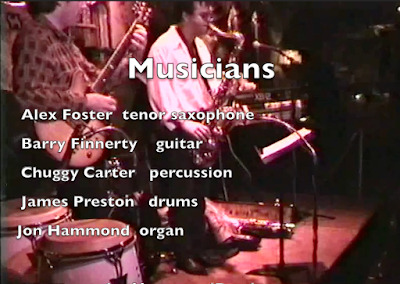
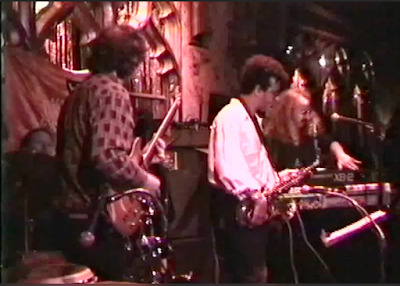
Le Bar Bat Hi8 Film Late Rent Jon Hammond Show Theme SongMUSICIANS:Alex Foster tenor saxophoneBarry Finnerty guitarChuggy Carter / Leslie J. Carter percussionJames Preston drumsJon Hammond organJon Hammond BandCamera Joe Bergerwww.HammondCast.comLe Bar Bat 311 W 57th St, New York, NY 10019Cable TV Show - Jon Hammond ShowManhattan Neighborhood Network - MNN Ch. 1 35 years#LeBarBat
#MediasoundStudios
#BobbyBlank
Note this club was the old Mediasound Studios (excerpt from Mix Online Magazine) by Bobby Blank: "Bob Clearmountain, Godfrey Diamond, Michael Barbiero, Michael Delugg, Harvey Goldberg, Joe Ferla, Jeff Lesser, Alec Head, Bill Stein, Ron Saint Germain, Michael Brauer, Don Wershba, Ed Stasium, Gregg Mann, Carl Beatty, Kol Marshall, Lincoln Clapp, Joe Jorgensen, Alan Varner, Doug Epstein, Liz Saron, Trudy Schroder, Ramona Janquitto, Ron Dante, Charlie Calello, Tony Bongiovi — these are just some of the names that became the nucleus of Mediasound.

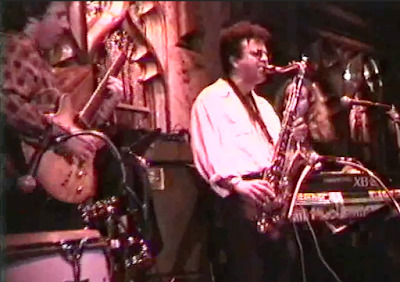
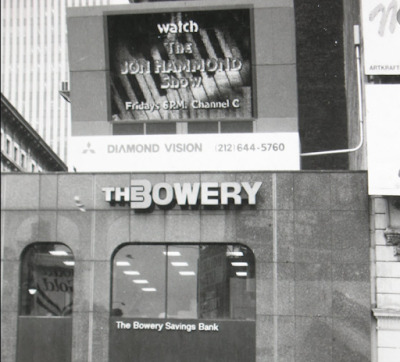

Note this club was the old Mediasound Studios (excerpt from Mix Online Magazine) by Bobby Blank: "Bob Clearmountain, Godfrey Diamond, Michael Barbiero, Michael Delugg, Harvey Goldberg, Joe Ferla, Jeff Lesser, Alec Head, Bill Stein, Ron Saint Germain, Michael Brauer, Don Wershba, Ed Stasium, Gregg Mann, Carl Beatty, Kol Marshall, Lincoln Clapp, Joe Jorgensen, Alan Varner, Doug Epstein, Liz Saron, Trudy Schroder, Ramona Janquitto, Ron Dante, Charlie Calello, Tony Bongiovi — these are just some of the names that became the nucleus of Mediasound.In New York City, from the close of the '60s through the birth and death of disco, Mediasound was a hit machine. Founded by Harry Hirsch, with assistance from Bob Walters and financial/business backing from owners Joel Roseman and the late John Roberts, Mediasound opened in June 1969 at 311 West 57th St. in the heart of Manhattan. Once home to the Manhattan Baptist Church, today the site is occupied by Providence (formerly the trendy Le Bar Bat), where you can still see the Gold Records on the wall. The live room, home to the hits, with, from left, the late Joe Jorgensen, chief engineer Fred Christie and founder Harry Hirsch The original idea came out of a random talk between Hirsch and Walters, who then went looking for money. “There were many 4-track studios in New York City,” recalls Roseman. “There was room for a state-of-the-art facility, one that could handle any kind of recording, tape copies, mastering — so we decided to change the scope of the idea. We went from the original $100,000 investment to over $1 million. It took a very long time to find the space, but Harry Hirsch found the Baptist church on 57th Street.”“I will always be grateful to John Roberts, Joel Roseman and Bob Walters,” Hirsch says, “who listened when I told them, ‘I found a church from heaven on 57th Street,’ and trusted me to design, build and be its first president.”A contemplative Barry Manilow in the live room.Producer Ron Dante: “I brought in my new recordingartist Barry Manilow to record his second album—the one that included our first breakthrough million-seller ‘Mandy.’ Right away we knew that Mediasound was the place to make the best-sounding records in the business.” Bob Clearmountain (Kool & The Gang, Sister Sledge, Gloria Gaynor and countless others) was handpicked to change the light bulbs 40 feet up in the cathedral ceiling. "I was the only one nuts enough to go up there!" he recalls.Producer Ron Dante with Pat Benatar. Dante: "Being in Mediasound always made you feel like you were about to create a hit."Tony Bongiovi, front, seen here withTrini Lopez in 1978, at Power StationThe owners, at Woodstock '94, 25 years after the original: JoelRoseman (L) and the late John RobertsPat BenatarCharlie Callelo "
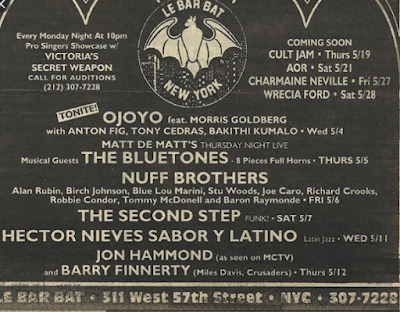
Topics Le Bar Bat, Late Rent, Jon Hammond Show, Mediasound Studios, Cable TV Show, Theme Song, Hammond Organ, Fender Showman amp, SNL Saxophonist, Alex Foster, Barry Finnerty, Jon Hammond, Chuggy Carter, James Preston, Drummer Sons of Champlin Language English
0 notes
Photo

Ana Victoria Jiménez (Mexican, b. 1941), from the series Cuaderno de tareas (Assignment book), 1978-81Four sets of ten black-and-white photographs. 25 sheets: 10 × 6 1/2 in. (25.4 × 16.5 cm); 15 sheets: 6 1/2 × 10 in. (16.5 × 25.4 cm). Courtesy of Ana Victoria Jiménez. ©the artist. Image courtesy of the Hammer Museum.
PLAN ForYourArt: December 7–13
Thursday, December 7
Winter Soiree, The Music Center (Downtown), 5:30pm. $2,500.
Family 1st Thursday: Installation Art, Santa Barbara Museum of Art (Santa Barbara), 5:30–7:30pm.
Artist and scholar walkthroughs: Angela Lopez Ruiz, Hammer Museum (Westwood), 6pm.
Sculpture to Wear !ndelible, Kopeikin Galllery (Culver City), 6–9pm.
Paul Brach Lecture Series: Wizard Apprentice (Tieraney Carter), CalArts (Valencia), 6pm.
Graphic Design T-Shirt Show, CalArts (Valencia), 6–11pm.
David Alan Harvey: Capturing Cuba, Annenberg Space for Photography (Century City), 6:30–8pm.
GEORGE BALANCHINE'S THE NUTCRACKER, The Music Center (Downtown), 6:30pm. Through December 10.
Talk: Curator Walkthrough of "A Universal History of Infamy" with Rita Gonzalez, LACMA (Miracle Mile), 7pm.
CraftNight: Papercraft A Holiday Workshop, Craft and Folk Art Museum (Miracle Mile), 7–9pm. $10.
at land’s edge presents Jimena Sarno, Southern California Library (South L.A.), 7–9pm.
Felipe Dulzaides and John Loomis on Havana's National Art Schools, LAMAG (East Hollywood), 7pm.
Rodney Bingenheimer "Santa's Got a GTO Vol. 2" LP and Gearhead Magazine Release Party, La Luz de Jesus Gallery (Los Feliz), 7–10pm.
ALTERNATE ENDINGS, RADICAL BEGINNINGS, MOCA Grand Avenue (Downtown), 7–9pm.
In Conversation: Lok Siu and Maria Magdalena Campos-Pons, California African American Museum (Downtown), 7pm.
SCREENINGS Part of the series The Contenders 2017: Get Out, and Q&A with Jordan Peele, Hammer Museum (Westwood), 7:30pm.
Reading Series, Women’s Center for Creative Work (Frogtown), 7:30–9:30pm.
Crotty Lecture - Christian Origins in Early Modern Europe: The Birth of a New Kind of History, The Huntington (San Marino), 7:30pm.
CalArts Winter Dance, CalArts (Valencia), 8:30pm. Also December 8.
Jazz Ensemble Concert, CalArts (Valencia), 10pm.
Friday, December 8
Conference: Globalizing the Protestant Reformations, The Huntington (San Marino), 8:30am.
Indigenous Knowledge and the Making of the Colonial Latin America, Getty Center (Brentwood), 9:30am–5pm.
Deconstructing Allusion II: Featuring Greg Miller, JoAnne Artman Gallery (Laguna Beach), 11am–5pm.
Little Masters of Imagine Studio, Center for the Arts Eagle Rock (Eagle Rock), 5–9pm.
ARTIST APPEARANCE: THOMAS DEMAND, Palm Springs Art Museum (Palm Springs), 5:30pm.
Your Mouth A Constellation, JOAN (Mid-City), 7pm; performance, 7:30pm.
REGGAE ON THE BORDER: THE POSSIBILITIES OF A FRONTERA SOUNDSCAPE, Museum of Latin American Art (Long Beach), 7pm.
Film: An Evening With . . . Sam Esmail, LACMA (Miracle Mile), 7:30pm.
REMATCH by Simone Forti & Carmela Hermann Dietrich, Highways Performance Space (Santa Monica), 8:30pm. $20–25. Also December 9.
Bennie Maupin plays The Jewel and The Lotus (1974, ECM), REDCAT (Downtown), 8:30pm. $15–25.
Desert Soul Club, Mod Soul Funk Party, Tonga Hut (Palm Springs), 9pm–1am.
WINDS FROM FUSANG: MEXICO AND CHINA IN THE TWENTIETH CENTURY, USC Pacific Asia Museum (Pasadena).
Saturday, December 9
Quiet Mornings: Art x Mindfulness, The Geffen Contemporary at MOCA (Downtown), 9:30am.
Lecture: Herbert Cole on Mothers and Children in the Arts of Africa, Fowler Museum (Westwood), 11am.
A Step Back In Time, The Perfect Exposure Gallery (Koreatown), 11am–4pm. Continues December 10.
Holiday Sale, White Lodge (Highland Park), 11am–4pm.
HOLIDAY BAZAAR SHOPPING EVENT, THERE-THERE GALLERY (Hollywood), 12–5pm.
L.A. Makers Pop-Up, LACE (Los Angeles Contemporary Exhibitions) (Hollywood), 12–7pm.
Holiday Marketplace, Self Help Graphics & Art (Downtown), 12–5pm.
Quema Del Diablo Music and Arts Festival, Joshua Tree Retreat Center / Center of Mentalphysics (Joshua Tree), 12pm.
Sun and Shadow: Imagining Los Angeles and Mexico City, ca. 1950, lecture by architectural historian Keith Eggener, LACMA (Miracle Mile), 1pm.
The Art Of Creative Manifestation And Entrepreneurialism, Women’s Center for Creative Work (Frogtown), 1–4pm. $24–30.
Queer Werkout with Nicola Bullock and Sarah Bouars, Pieter (Lincoln Heights), 1–3pm. $15–20.
MFA Open Studios, UC Riverside (Riverside), 1–5pm.
PST: Video Art in Latin America – Curator Walk Through and Screening, LAXART (Hollywood), 2pm; screening, 3:30pm.
Gingerbread House Workshop, Laguna Art Museum (Laguna Beach), 2–4pm. $10.
Around the Table: Recipes and Stories from The Lark SB, Santa Barbara Museum of Art (Santa Barbara), 2pm.
Artist talk: Katie Crown: Watercolors and Joan Wynn: Alive, TAG Gallery (Santa Monica), 3pm.
M E G A P H O T O B O O K S A T U R D A Y!, Arcana Books on the Arts (Culver City), 3–7pm.
37th Annual Black Doll Show, William Grant Still Arts Center (West Adams), 3–6pm.
Michael Queenland, Kristina Kite Gallery (Mid-City), 3–5pm.
1ST CHILDREN’S HOLIDAY GALA, Museum of Latin American Art (Long Beach), 3–6pm.
plant spirit meditation ceremony with tea infusions, Five Car Garage (Santa Monica), 4–5pm.
Terry Leness: Sunshine Muse and Jennifer Bain: A Palimpsest of Time and Place, Lia Skidmore Contemporary Art (Santa Monica), 4–6pm.
Brass Ensemble Concert, CalArts (Valencia), 4–6pm.
Betty Sheinbaum: An Artist, TAG Gallery (Santa Monica), 5–8pm.
Graduate Open Studios, UCLA Graduate Studios (Culver City), 5–8pm.
There is Only One Paul R. Williams, WUHO - Woodbury University Hollywood Outpost (Hollywood), 6pm.
Holiday Echo Park Craft Fair, Mack Sennett Studios (Silver Lake), 6–9pm. Also December 10.
THE ARTYSSEY, Skid Row History Museum & Archive (Downtown), 6–8pm.
SOUTHLAND ENSEMBLE FLUXUS : CONSTRUCTION, Automata (Chinatown), 8pm. $15.
Lou Harrison, Music of the Pacific, REDCAT (Downtown), 8:30pm. $15–25.
Experimental Futures: Alex Wand, Cari Stevens, Molly Allis, Justin Asher, Human Hemingway, OOLA, Pieter (Linoln Heights), 8:30–10pm.
Sunday, December 10
Getting Real With Money, Women’s Center for Creative Work (Frogtown), 10am–1pm. Also December 17.
CREATE: A Comedy of Hands/Una comedia de manos, ESMoA (El Segundo), 10am–1pm.
HANUKKAH FESTIVAL LA/LA, Skirball Cultural Center (Brentwood), 11am–4pm.
Nutcracker: The Motion Picture and Where the Wild Things Are, Hammer Museum (Westwood), 11am.
THERE-THERE AND FORYOURART CERAMICS SUNDAY, there-there (Hollywood), 11am–3pm.
COMMUNITY HOLIDAY FESTIVAL, Museum of Latin American Art (Long Beach), 11am–5pm.
Holiday & Cookie Time, 356 Mission (Downtown), 12–5pm.
Tow Truck Towing a Tow Truck, haphazard/ as-is.la (Downtown), 1–5pm.
Performance and Open House, Side Street Projects (Altadena), 1–4pm.
Upcycled Instrument-Making Workshop with Guillermo Galindo and JR Thomason A CraftLab Family Workshop!, Craft and Folk Art Museum (Miracle Mile), 1:30–3:30pm. $5–7.
Studio Sunday on the Front Steps, Santa Barbara Museum of Art (Santa Barbara), 1:30–4:30pm.
Free The Voice!, Women’s Center for Creative Work (Frogtown), 2pm. $32–40.
Lecture - Cochineal in the History of Art and Global Trade, The Huntington (San Marino), 2:30pm.
Talk: The Thirtieth Annual Michele and Peter Berton Memorial Lecture on Japanese Art: Bachelors' Passions and Ladies' Crazes: The Gender of Japanism, LACMA (Miracle Mile), 3:30pm.
Performing Wellness With Deborah Seabrook, Women’s Center for Creative Work (Frogtown), 8–10pm. $10–20.
Guitars @ CalArts, CalArts (Valencia), 8–10pm.
Studio: Fall 2017, REDCAT (Downtown), 8:30pm. Through December 11.
El Segundo Holiday Parade, various locations (El Segundo).
Monday, December 11
Holiday Music: Vox Feminae, The Huntington (San Marino), 1–2pm.
SCREENINGS Part of the series The Contenders 2017: Lady Bird, and Q&A with Greta Gerwig, Hammer Museum (Westwood), 7:30pm.
Neighborhoods For All: Tenants’ Rights, Community Participation, & Housing Justice, Women’s Center for Creative Work (Frogtown), 7:30–9:30pm.
Tuesday, December 12
Finding Form and Robert Polidori: 20 Photographs of the Getty Museum, 1997, Getty Center (Brentwood), 10am–5:30pm.
Film: Nocturne, LACMA (Miracle Mile), 1pm.
LAND Annual Holiday Moveable Feast, Carmencita (Hollywood), 6–9pm. $75.
SCREENINGS Part of the series The Contenders 2017: The Big Sick, and Q&A with Kumail Nanjiani, Emily V. Gordon, and Michael Showalter, Hammer Museum (Westwood), 7:30pm.
Wednesday, December 13
Pierre Fatumbi Verger: Mensageiro Dois Mundos, Fowler Museum (Westwood), 7–9pm.
Community Generated Safety—How it works in Gladys Park and Holiday Party, Skid Row History Museum & Archive (Downtown), 7pm.
In Conversation: Thelma Golden and Gary Simmons, California African American Museum (Downtown), 7pm.
How To Have Hard Conversations: Step 2, Constructive Conflict Communication at Work, Home and Everywhere In Between, Women’s Center for Creative Work (Frogtown), 7–10pm. $16–20.
SCREENINGS Part of the series The Contenders 2017: The Florida Project, and Q&A with Willem Dafoe and Sean Baker, Hammer Museum (Westwood), 7:30pm.
2 notes
·
View notes
Text
{A/N} ٩(♡ε♡ )۶
I~ have been playing (and just finished!) Batman: The Telltale Series, and I want to talk about it, because I just have...a lot of feelings about it.
So uhm, be mindful below the cut. (♡´艸`)

First things first, I will admit I wasn’t expecting to...get into this game, lol. I decided to play it on a whim, just to sorta...I consider myself “toes wet” with DC (I know Bunny tends to give me more credit than that because she’s a peach ♥) but I figure, this’ll get me more ankle deep, even if it’s not like “canon” or anything--which, comic canon is weird and fluid so whatever, I’m not being real strict with the Telltale TL being canon.
Anyway.
So I figured I’d just play it and see some babies and enjoy that...but I got into it. Being able to be in the driver’s seat, making decisions as Bruce and really simulating his life endeared me to him and his universe more than I anticipated.
It’s one thing, to read comics and see writer’s words coming out of character’s mouths and being all, “Yeah, okay,” but when you’re making the decisions, it personalizes it. And unsurprisingly, I played a compassionate, empathetic, emotional Bruce Wayne, not some stunted machismo machine in a bat cowl like some writers and fanboys want him to be.
So I guess it’s safe to say this made me love him more.
I noticed something, playing--and it’s true Telltale style, like the Walking Dead games, where you have a wheel of sentence choices that determine your path--and it’s that Bruce runs into the same sort of problem that I see with Steve Rogers. I don’t see it quite as much with Tony, but Steve has a problem with writers wanting him to be some white bread, bulging bicep “JUSTICE FOR BREAKFAST LUNCH AND DINNER” machine when there’s so much more to him than that. It’s like uh, like the recent Civil War re-read that I did with Monica, that line where he’s criticizing his soldiers by calling them “Nancies” and basically comparing them to women--but Steve Rogers, MY Steve Rogers, guzzles his respect women juice because he respected and loved the absolute fuck out of Peggy Carter. But it’s writers who put that shit in his mouth and make him say and do things that then make me side-eye the fuck out of him.
And I’m realizing Bruce has the same issue, and I realized that playing this game, and seeing how he talks to people and really playing up the fact that he does have a heart and he does have feelings--and don’t get me wrong. I’m fine with emotionally stunted characters, I think it’s cute, but I’m on about those buttplugs who like, don’t write Bruce treating his sons like his sons because it makes him “soft” or when they make him treat Alfred or Clark/his teammates like shit or when he openly beats his own kids, like??? Fuck off, that’s not what I’m interested in and to be honest I don’t think that’s who Bruce Wayne is supposed to be.
So playing this game and going the compassionate route, going the route of making Bruce appreciate Alfred and Lucius and Harvey, people who support him and are his friends/family, it reminds me when we were reading the War on Jokes arc and seeing Bruce initiate the “I love you’s”. That shit about melted my heart and to be honest was right up there with his penchant for adopting kids that really made me notice him. To make me give a shit about him and not just because he’s Batman.
Which, by the way, I fucking love that he says that? Like Tony says it, “I am Iron Man,” and it’s cute they share a catchphrase or whatever, but I love that Bruce says it with a straight face and at the most ridiculous times.
I won’t go into like, a full rundown of the game or anything--to be honest I wasn’t going to talk about the game at all, but I surprised myself being so into it and full of feelings about it that I just wanted to talk about it somewhere.
I think I’ll start with the character designs, because it was real hit or miss.
Hit:
Harvey Dent*
John Doe/Joker
Bruce Wayne (...eventually)
Miss:
Selina Kyle
Alfred Pennyworth
Oswald Cobblepot
Now, take my criticisms and compliments with a grain of salt, please~ My tastes are eclectic at best and I like things that are different/out of the norm, so. And it has nothing to do with the character, this is strictly aesthetic.
Let’s start with the hits--Harvey.
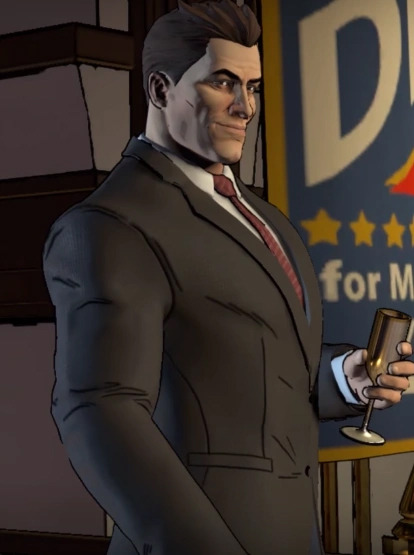
I’m sure my love for him here is unsurprising~ But lemme talk about it anyway.
He was a big beefy boi in this game and I was 👀 from freaking jump. I went into this game blind so I had no idea he was even in it, but he was noticeably the biggest boy (okay well almost, there was this one bigger Frankensteinesque dude I didn’t recognize and whose name WAS NEVER GIVEN TO ME) on the block--haha lemme give him Brenn’s title as the Buffest Boy on the Block. He filled his suits OUT and I was here for it. I loved his facial structure, which surprised me considering I didn’t think I’d be keen on Telltale’s art styles.
As for the * up there on his name, I want to say that I went the route of saving Harvey from himself, so I didn’t let him turn fully into Two Face (this go ‘round at least) but I did see that ridiculous mask they gave him and that’s a huge thumbs down for me.
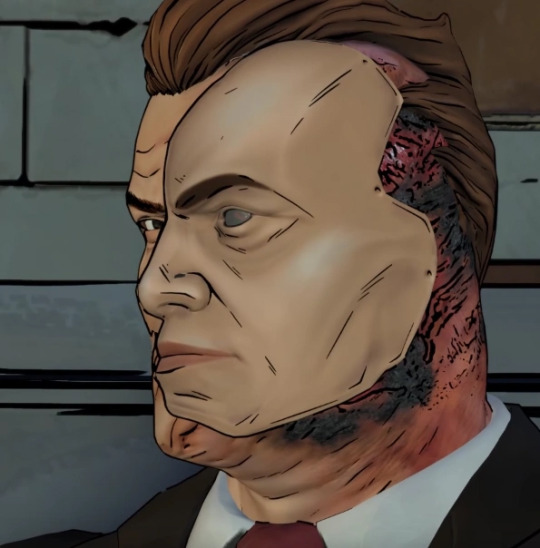
Lemme see them beautiful scars pls.
He looks delectable as Two Face so the only negative is that mask they tried to give him for whatever reason. 0/10, would take that off immediately.
Next up is Mr. John Doe, aka Joker.
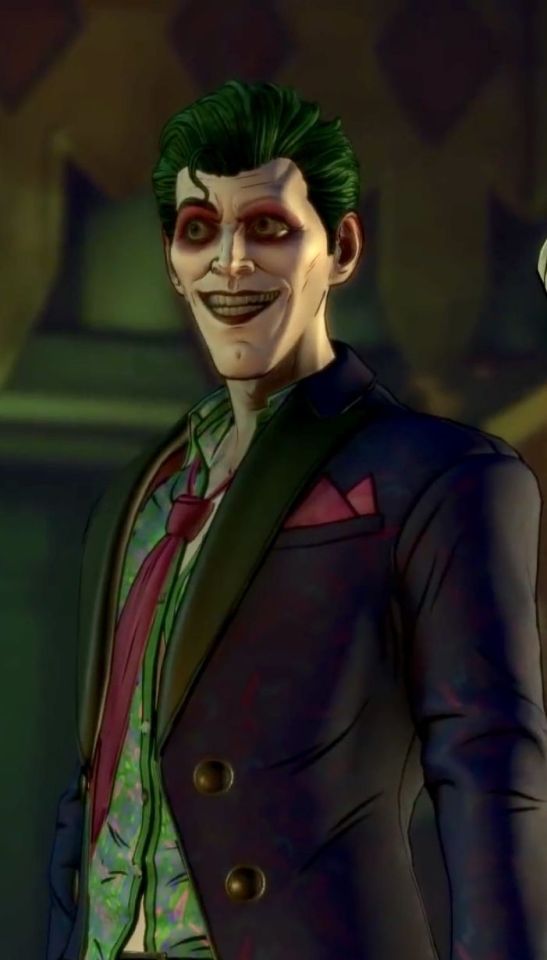
And I have to say, like Bruce, he really surprised me--one, because I didn’t know he was in this either (IDK SHIT ABOUT DC STUFF, SO) but two, because I wasn’t prepared to really pay him all that much attention. Harvey’s a given; he, like Arthur, I had a soft spot for anyway because of Kayla’s rampant hatred (thus, giving me a need to love them as unloved characters) but Joker? Everyone loves Joker, so I was tipping toward, like, patting him on the head and sending him on his way kinda thing.
Nope. No. He showed up and I was like ???? WHY ARE YOU SO CUTE ALL OF THE SUDDEN.
Seriously, this art style fucked me up when it came to him. He’s stupid adorable in this game.

I MEAN WHO WOULDN’T WANT TO KISS THIS FACE?????
I’m fucking annoyed by it, I think because I was prepared to just breeze by him, but like I don’t wanna slap him or anything but it gives me the same cute aggression small humans and kitties do. I wanna squish his face and just coo over it, that smile is infuriatingly infectious.
Idk why I find him so cute in this particular style but it was like getting punched in the chest, like he showed up and saved me/Bruce and all the sudden I’m like, murder whoever you want just keep...smiling?
And don’t get me wrong, I’m all for his edgy styles, there are some where he’s almost monstrous-looking, grotesque and the like and you know that tickles my fancy but this particular Joker tickled another fancy of mine. He was almost like a puppy, here.
Eager.
So yeah. I guess I have a crush on Joker now.
And last but not least on the Hit list--Bruce Wayne.
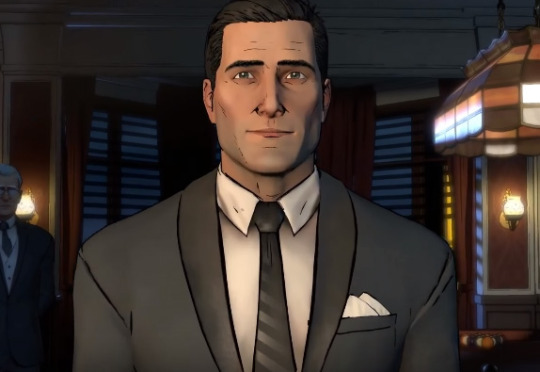
And I’ll admit, as I did up here, that this look took me a little while to come to appreciate. Reminds me a lot of how I felt about Peter from ItSV, but I love that look on him now and that’s how I feel about Bruce. This grew on me the more I played, although when I started I thought he looked way too much like Archer.
And it seems I wasn’t the only one.
And while, like with Peter B., this particular incarnation won’t be my favorite Bruce Wayne look, there’s a softness to this particular incarnation that seemed to really suit the way I played him--which might be why I liked it.
There was a nice touch, though, because when he slipped on the cowl, when he became Batman, there was a decided shift not only in his personality but his physicality, too--

Which reminded me of something I’d read where Clark does the same thing.
So yeah, this incarnation took a little to grow on me, and it may not be my favorite, but I did come to at least appreciate it.
Now let’s talk about the Misses, starting with Miss Kyle.

And it’s weird, because as Catwoman she was stunning and there’s this one scene with her eyeliner on fucking point and it was SENDING ME. Good fucking god I was a dumb dyke through the whole scene, I doubt I could remember a word she said.
But there on the left, her hair was like some weird mix of a bob but too long and uneven to be one? And don’t get me started on her baby ponytail; it seemed too...childish? Sloppy? For her.
And something was off about her mouth. Idk if it was Telltale’s style or if the graphics were a little stiff but her mouth bothered me the entire freaking game.
I feel bad about saying Alfred was a miss but again, this is just from an aesthetic point. The man is a saint otherwise and I won’t say a cross word about him.
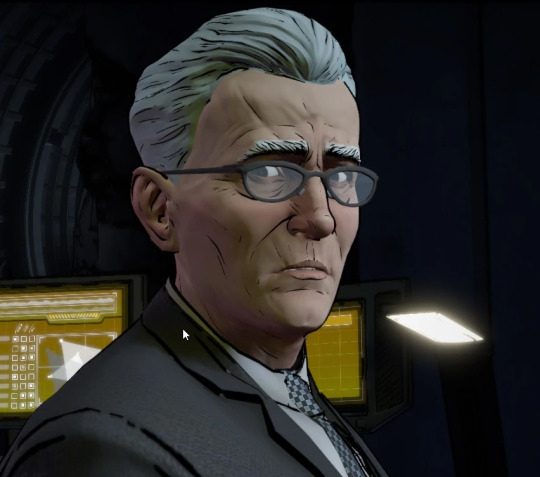
It’s not even that I dislike this particular look of his, it’s just, I have a favorite look of his and this is so far from it (and most of his normal looks) that sometimes through the game it would take me a half second to remember this is supposed to be Alfred.
It was like with Bruce, only it didn’t grow on me quite the same.
Like I said, I just have a favored look of Alfred’s (I’d dig up the picture but it’s on my phone and I’m lazy) and this just didn’t make the cut.
Uhm and lastly, Oswald.
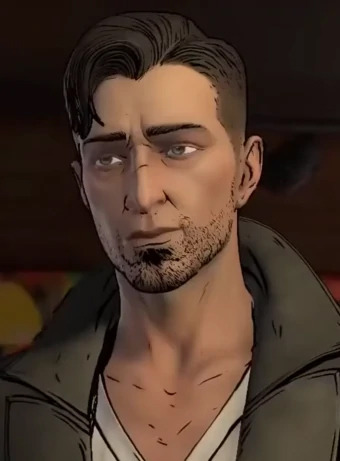
Out of the Rogues of Gotham I feel like I don’t know Victor Freeze and Oswald Cobblepot...nearly well enough to be talking about them. But the game dealt with Oz so...I’m here talking about him.
And really my issue with him is that...to me he was barely recognizable because I only know Penguin by his typical outlandish look--short, round as a goddamn beach ball, and with that insane curved/hooked nose.
So I may be wrong in that he does look like this sometimes? I really wouldn’t know, like I said I don’t know Mr. Cobblepot very well at all. I just was surprised he looked like this and when Bruce was all, “Penguin?” I was also ?????? but for a different fucking reason, lmao.
I didn’t put Jim up here because he’s always on point regardless of what he looks like, so. 10/10, no notes for you, Jim. ♥
So moving beyond eye candy, the actual game itself, like I said, it was a surprisingly endearing way to be introduced to Gotham. It’s one thing to read the comics and see this particular writer’s vision of what Gotham is and who Bruce Wayne is, but with me in the driver’s seat and getting to make decisions, I got to shape Gotham and Bruce/Batman the way I would like them to be (at least as much as the game allows, lol) and there’s definitely something to be said about that.
I made sure to try and stick at least somewhat to how I think Bruce would have reacted to some things--especially as Batman. I like to stay true to superheroes’ brands (in terms of gameplay, writing is another story) so I kept the no-killing and tried to be...less violent than I might have been if I were, say, Frank. Which helped me win over Jim, so~ Haha but I uhm, I went the compassionate route with Bruce as Bruce Wayne, I was supportive of those around me and appreciative of them.
Unsurprisingly there was a Bruce/Selina aspect to the game, and I played that more as myself, because like Bunny I don’t really like them together. Selina is fine on her own, I see what she was saying about that, but seeing the way Selina is with people--she says things to hurt Bruce just to do it, and I’m...not down with that. Emotional maturity is a thing, lol, maybe she could steal some of that.
Ha-cha~ That joke isn’t funny but I said it anyway.
But I get it. I...palmed Bruce’s face out of the way and just gave the emotional answers as myself and I could see beyond Selina’s words to what she’s hiding--or trying to. You hurt others to keep yourself from being hurt, I’ve seen that sort of behavior before and I get she’s hiding her feelings by lashing out--a lot like a kitty with her claws out. So I have respect for her as a character because of the complexity, it’s just not how you go about having a relationship with someone, lol.
Like she stole some shit from Bruce, was fine to do it, so I retaliated by stealing some of her tech because i’m a petty ass bitch and she got bitey with me about it.

Like girl.
I also, like I said, went the route of supporting Harvey...because of course I did. I defended him every chance I got, funded his campaign...even after he told me he was distancing himself from me (let me LOVE YOU) and when he started to snap and Two Face was trying to get out, I refused to fight him and encouraged him to get help.
In the end, when Harvey turned on Bruce and literally tried to kill Alfred, Jim asked Batman if Harvey should “rot in prison,” or be sent to Arkham to get help.
I...know Arkham is corrupt and that’s a whole thing in and of itself but I went the compassionate route and sent Harvey to get help.
In the end, I saw Harvey in a cell. He refused to come out and help the inmates during a riot, but the poor baby actually looked kind of afraid?
And not to like, go off on a rant or anything but it was interesting seeing this take on Harvey/Two Face. I could relate to it, in a way, because it reminded me of my Alters and how I created Drette and especially misi to sort of allow myself to be and feel things that I typically try to hide.
Two Face started to show himself and though he...wasn’t nice to Harvey, he did defend him and insist he was there to protect Harvey, that “no one will ever hurt or take advantage of him again”.
Touched my heart. ♥
Selina was also playing Harvey, 100% using him for her own means and she said, about him, “Poor guy just wanted to fall in love so bad.”
AND THAT BROKE MY HEART.
He did seem very lost in this game, like this need to be Mayor and to be this big shot attorney was trying to fill a void, make up for some inadequacies he felt he had.
I’ve always been a sucker for broken toys.
And speaking of broken toys, Joker’s whole deal really wasn’t touched on much in this game (it is in the second one, which I’ll probably start after work) but I want to talk about the fact that I was like one of like 15% of people who promised Joker a favor and I’m fucking weak over it.
Lemme set the scene--Bruce, stuck in Arkham, befriends Joker (because I fucking made him) and Joker says he’ll get Bruce out of Arkham “but you’ll owe me a favor~ When I get out of here.”
And you had a choice, to owe him a favor or not.
I was 0% hesitation to shake his hand, lmao, and I didn’t think much of it until I got to the end of the chapter and it was like, “You and 15% of others agreed to owe Joker a favor.”
And I was like...? Oh shit that probably was a bad idea, lmao.
HE’S CUTE, LIKE I SAID. TF YOU WANT FROM ME.
And Bruce’s little Codex journal (which was adorable, btw) updated to include the favor I promised and he wrote, “Not a big deal to owe a favor to a psycho who will never get out of Arkham, right?”
Which-
1) You’re adorably naive if you think he’s not getting out.
2) I legit didn’t consider it being a bad idea.
So I owe Joker a favor to be collected later and I should probably be concerned because the end of the game showed Joker out and fanboying over Bruce in a bar.
SO. (o゚□゚)o YEAH. TBC.
There were other highlights to the game, like getting to comfort and protect a little boy (BE STILL MY MATERNAL HEART) and for FUCK’S sake, Oswald taking over Wayne Enterprises for a bit.
The entire thing was infuriating as fuck, like I mildly wanted to kick Oz in the face repeatedly by the end of the game, but the scene where Bruce gets his company back and he’s looking at all the shit Oswald did while he had it--I was absolutely in hysterics.
First of all, Oswald used COMIC FUCKING SANS to cross out Bruce’s name and write “Cobblepot Enterprises” on the website. I fucking lost my mind. It was so childish and petty and the YELLOW font looked SO OUT OF PLACE WITH BRUCE’S SRS BUSINESS FONT EVERYWHERE ELSE.
But it gets better.
Oswald had his team hack Gotham’s public records and not only did he change Bruce’s Ivy League diploma to Sociology BUT HE FUCKING CHANGED BRUCE’S MEDICAL RECORDS TO SAY HE HAD SEVERAL STD’S.
WHEN I TELL YOU I FUCKING SCREAMED.
I had to pause the game because I was laughing so hard I couldn’t hear Alfred.
AND BRUCE FACEPALMED AS HE READ THE LIST and my god. I lost years off my laugh, laughing that hard.
I’ve talked quite a bit more than I intended to so I’ll wrap this up but before I do, I want to touch on one more thing and I think it’s that DC really did a good job with making Alfred the reason Bruce is a good man, a hero.
I haven’t read or seen or consumed all the Batman media that’s out there, but this is the fourth or fifth time I’ve seen Bruce’s parents turn out to be absolute shits. I mean this time it was only his father who was a dickhead, but the times his parents turn out to be garbage people vs actual decent human beings is like 6 to 1. And the one time I’m thinking of was some alternate dimension so I’m not even sure that counts.
So as someone who has pretty fucked up parents I think it’s nice to see a story where your parents don’t make you who you are. That timeline where Bruce’s parents lived and he turned into this spoiled, entitled brat, where it really showed that Alfred was the one who molded and shaped the good man who grew up to be Bruce Wayne, Gotham’s Golden Son...I think that’s so important. I really like that side of Bruce’s backstory, I think it’s something that isn’t as touched on as much as it should be.
There wouldn’t be a Batman without Alfred and it isn’t just because Alfred is always there at the end of the com when Bruce needs him.
And you can bet your sweet butt I made Bruce say that to Alfred at the end of the game. And Alfred got all teary and I got all teary and this is that qUALITY CONTENT.
Also? I’m super ashamed at the amount of people I saw in the stats who turned on Harvey and abandoned Alfred. I was in the minority a lot of time for shit I def shouldn’t have been in the minority for.
Half the time the stats would roll and I’m left looking at the PISS POOR CHOICES OF THE COMMON MAN LIKE
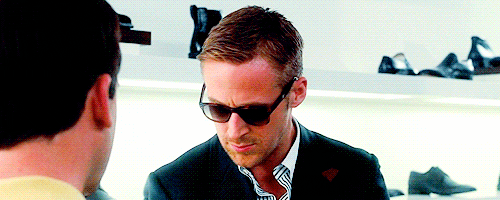
Y’all some worthless motherfuckers.
So yes! This was a lot of fun to play and I’m absolutely giddy to start the next game, especially since I get to see Puppy!Joker in it. And he’s going to be friends with Bruce because I’M IN THE DRIVER’S SEAT NOW, BATMAN.
Buckle up, Brucie, we’re full speed ahead toward Crazytown. ٩( ᐛ )و
0 notes
Link
For just $3.99 Released in July 2, 1937: During WWI, a British spy and a German spy meet and fall in love. Genre: Adventure Duration: 1h 17min Director: Victor Saville Actors: Conrad Veidt (Baron Karl Von Marwitz), Vivien Leigh (Madeleine Goddard), Joan Gardner (Lupita), Anthony Bushell (Bob Carter), Ursula Jeans (Gertrude), Margery Pickard (Colette), Eliot Makeham (Anatole Bergen), Austin Trevor (Dr. Muller), Sam Livesey (Major Schaeffer), Edmund Willard (General Berlin of German Intelligence), Charles Carson (Head of Fifth Bureau), Philip Ray (Faber), Henry Oscar (Swedish Magistrate), Lawrence Hanray (Cottin), Cecil Parker (Captain of the Q-Boat), Reginald Tate (Mate of the Q-Boat), Percy Walsh (Captain of the Swedish Packet), Robert Newton (Officer of the U-Boat), William Dewhurst (the killer), Laidman Browne (Rugge), M. Martin Harvey (Bohlan), Anthony Holles (the Dutchman), John Clifford (bit part), Cyril Smith (valet). *** This item will be supplied on a quality disc and will be sent in a sleeve that is designed for posting CD's DVDs *** This item will be sent by 1st class post for quick delivery. Should you not receive your item within 12 working days of making payment, please contact me so we can solve this or any other questions. Note: All my products are either my own work, licensed to me directly or supplied to me under a GPL/GNU License. No Trademarks, copyrights or rules have been violated by this item. This product complies with rules on compilations, international media, and downloadable media. All items are supplied on CD or DVD.
0 notes